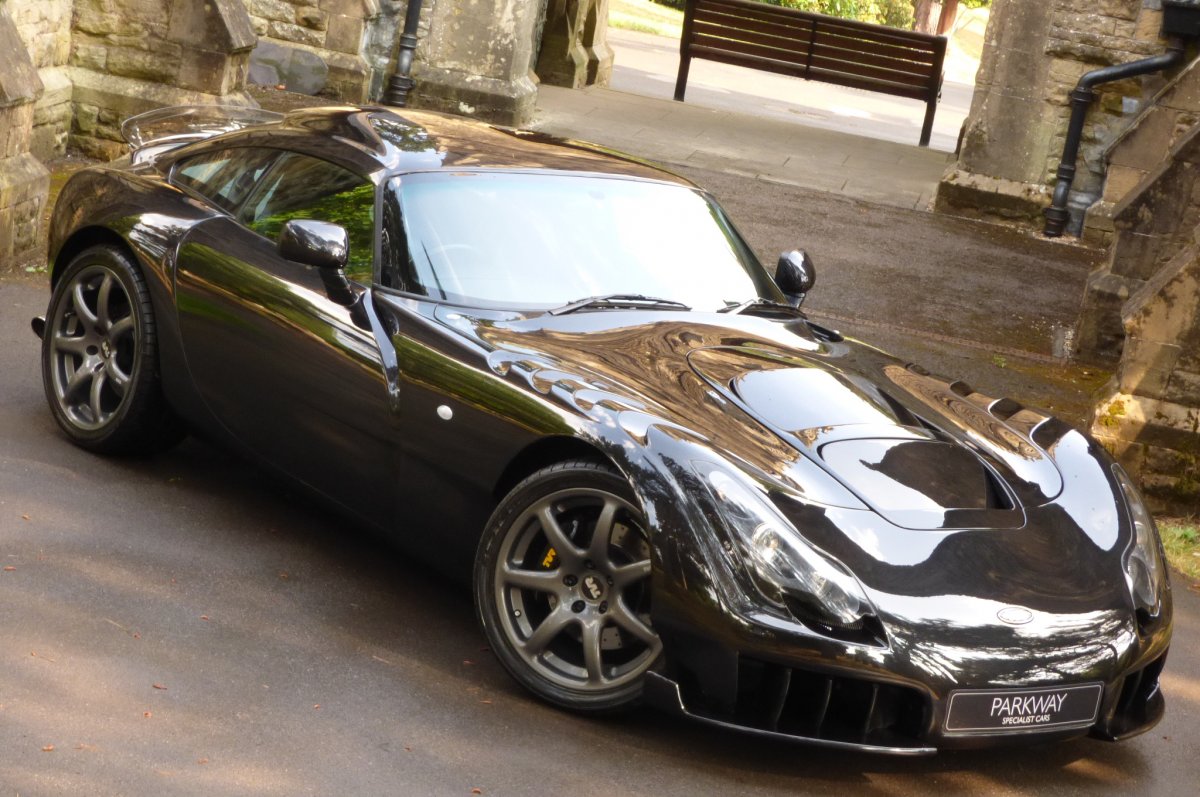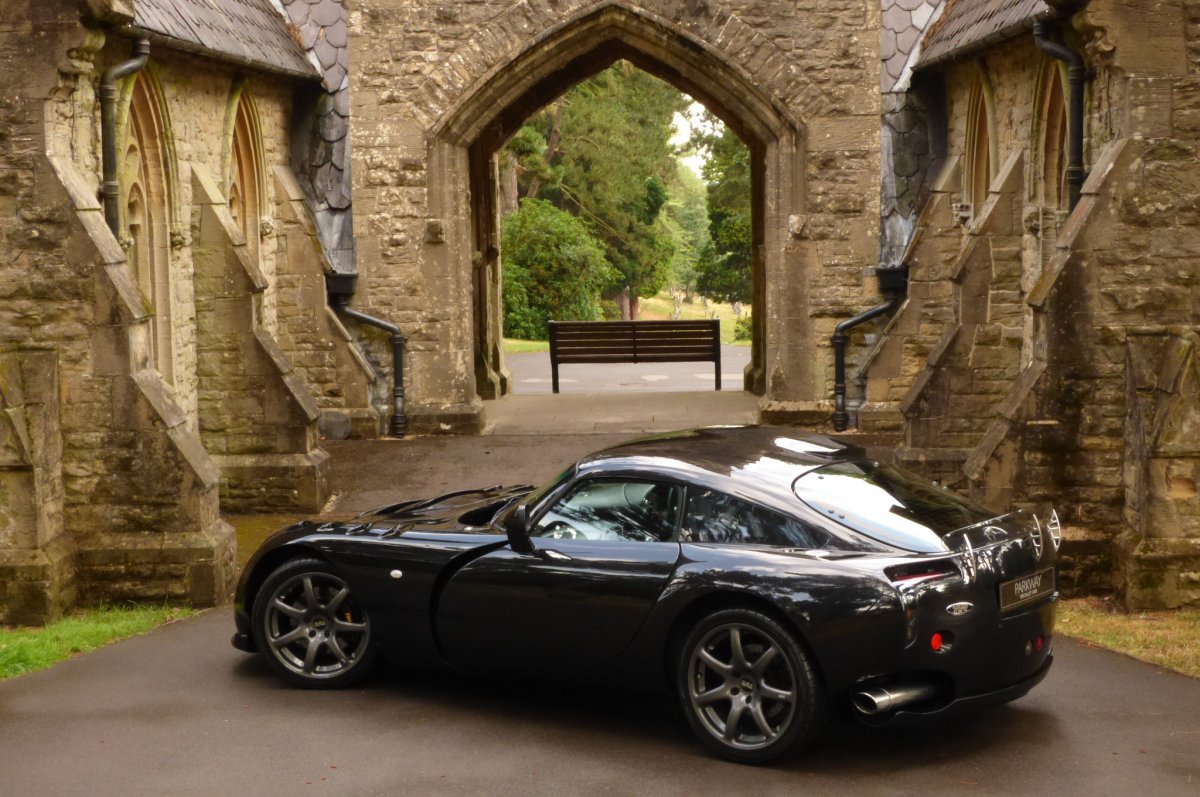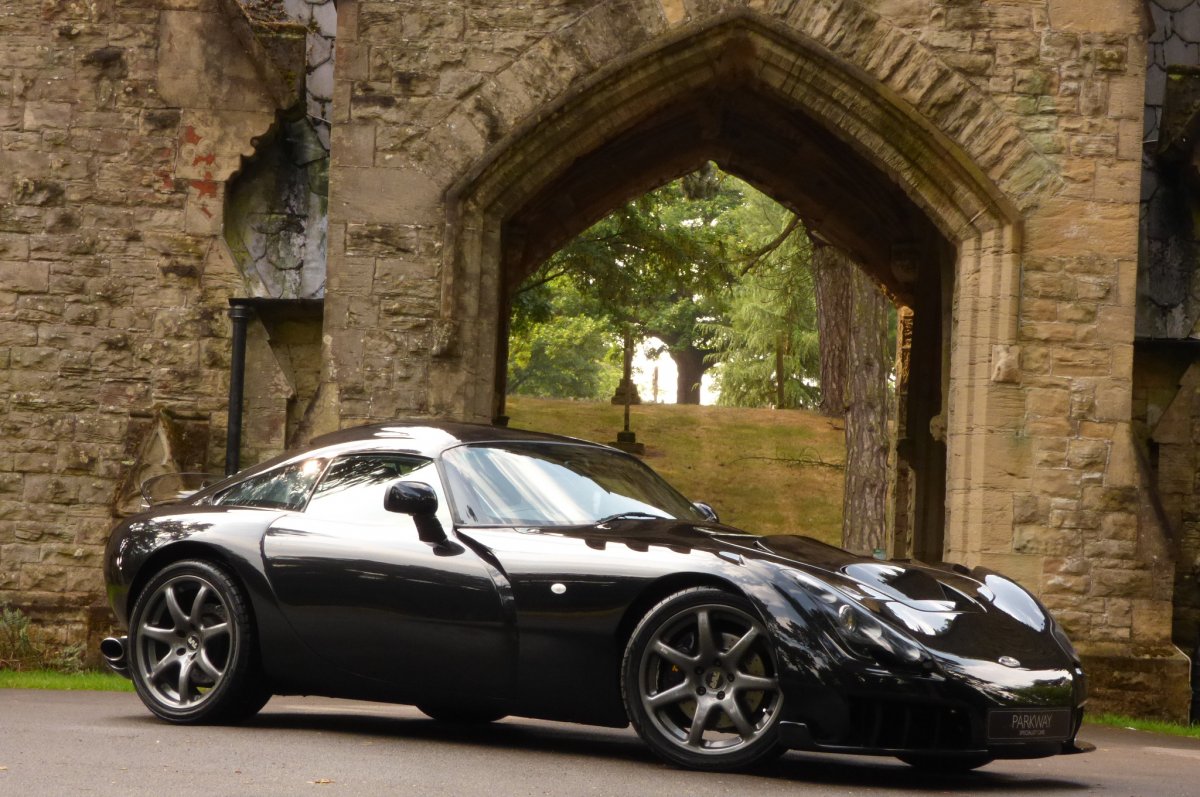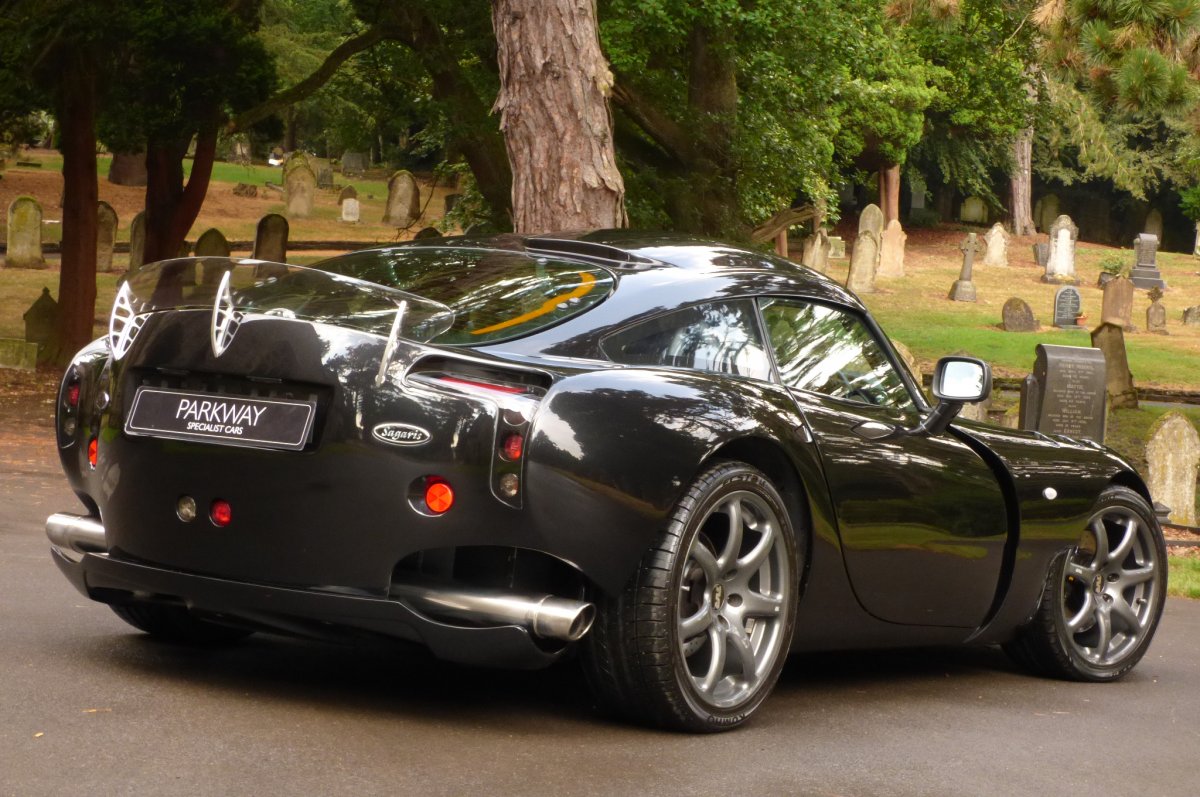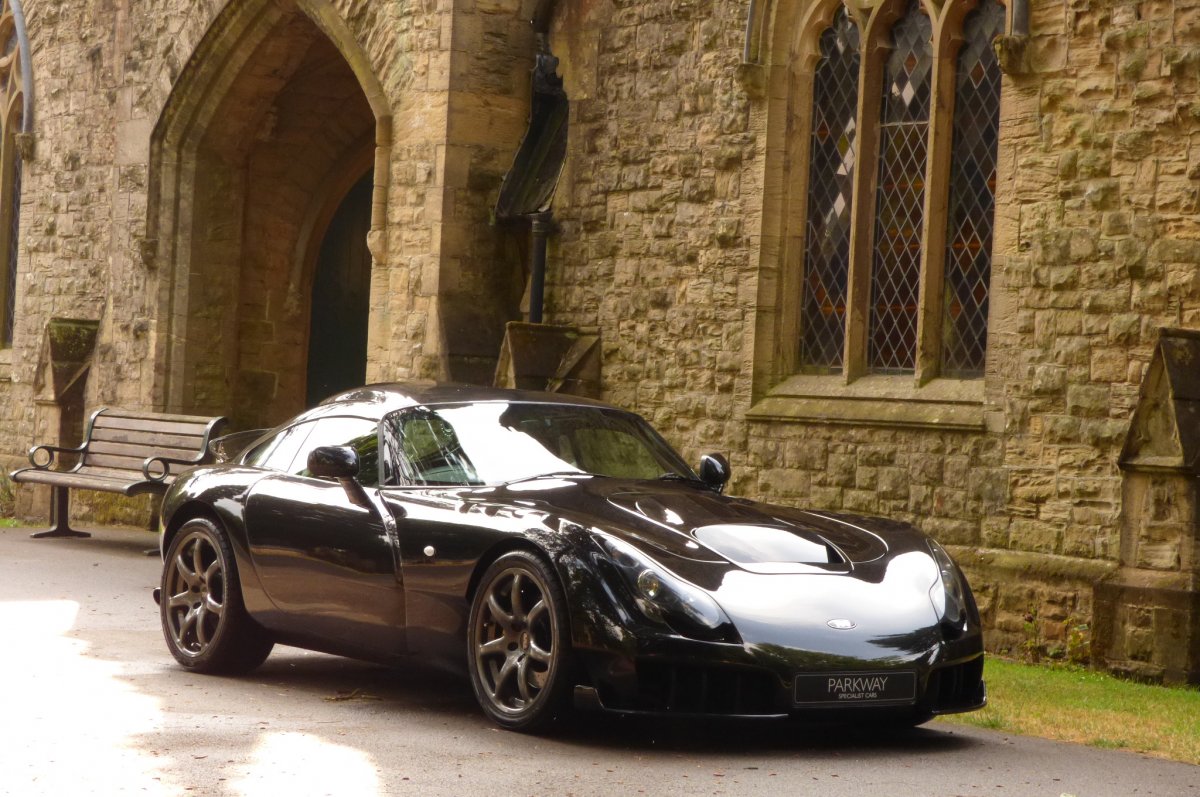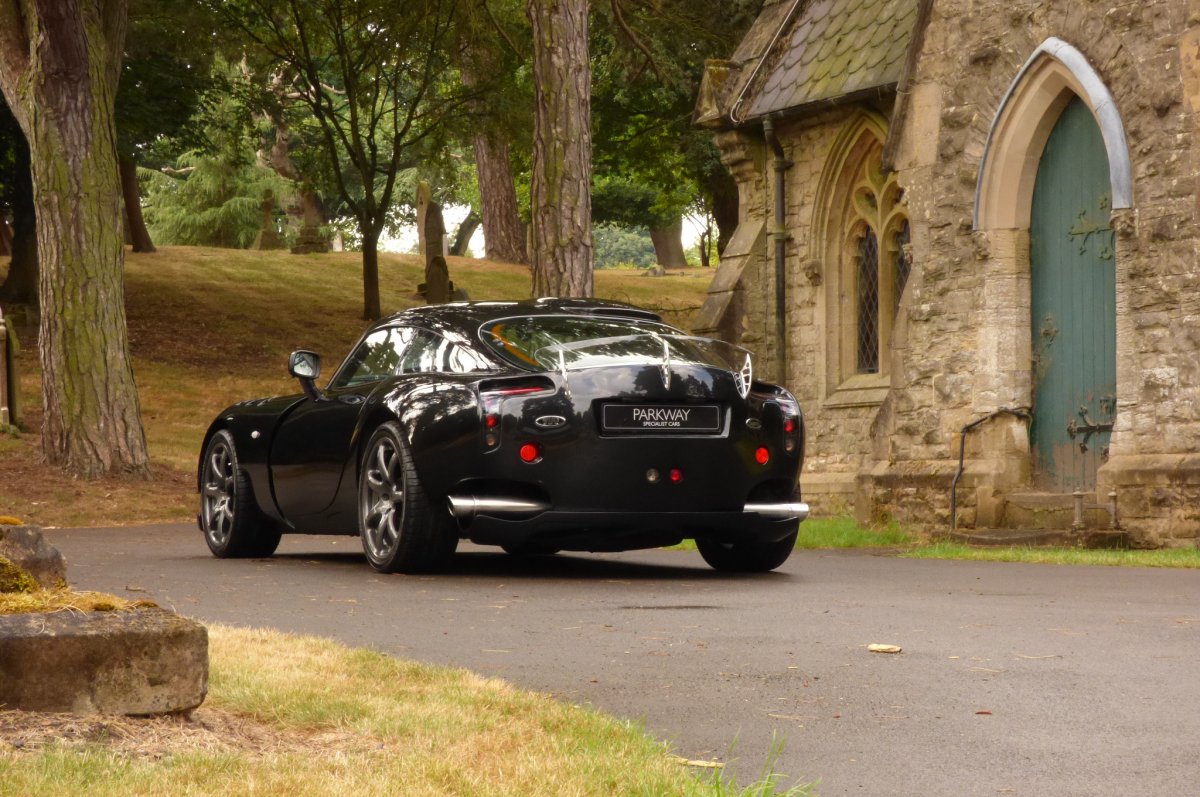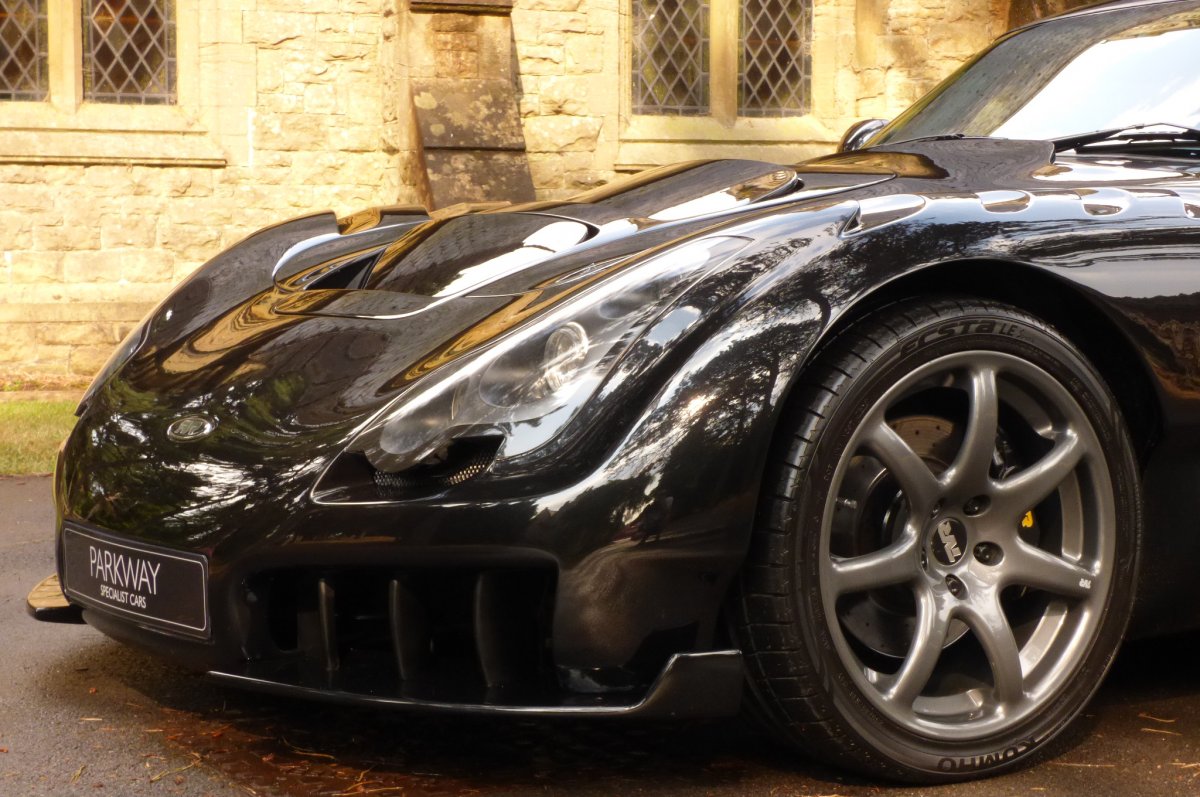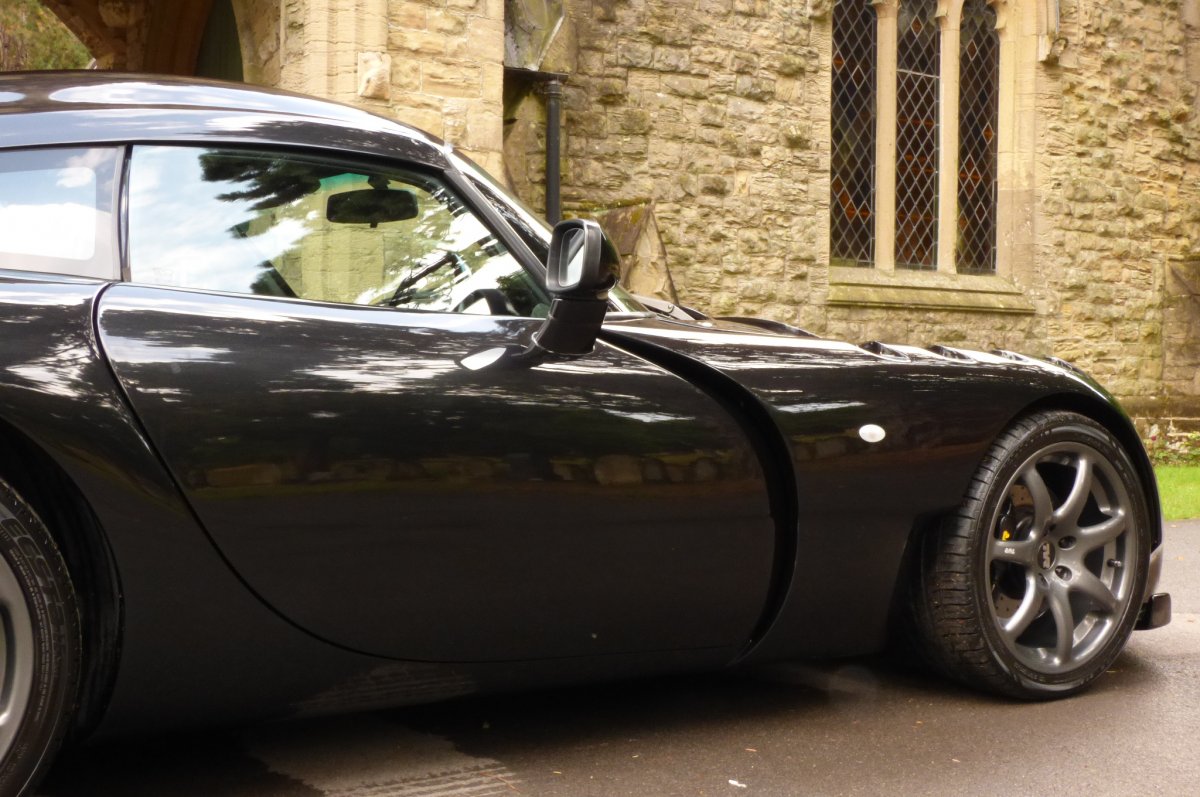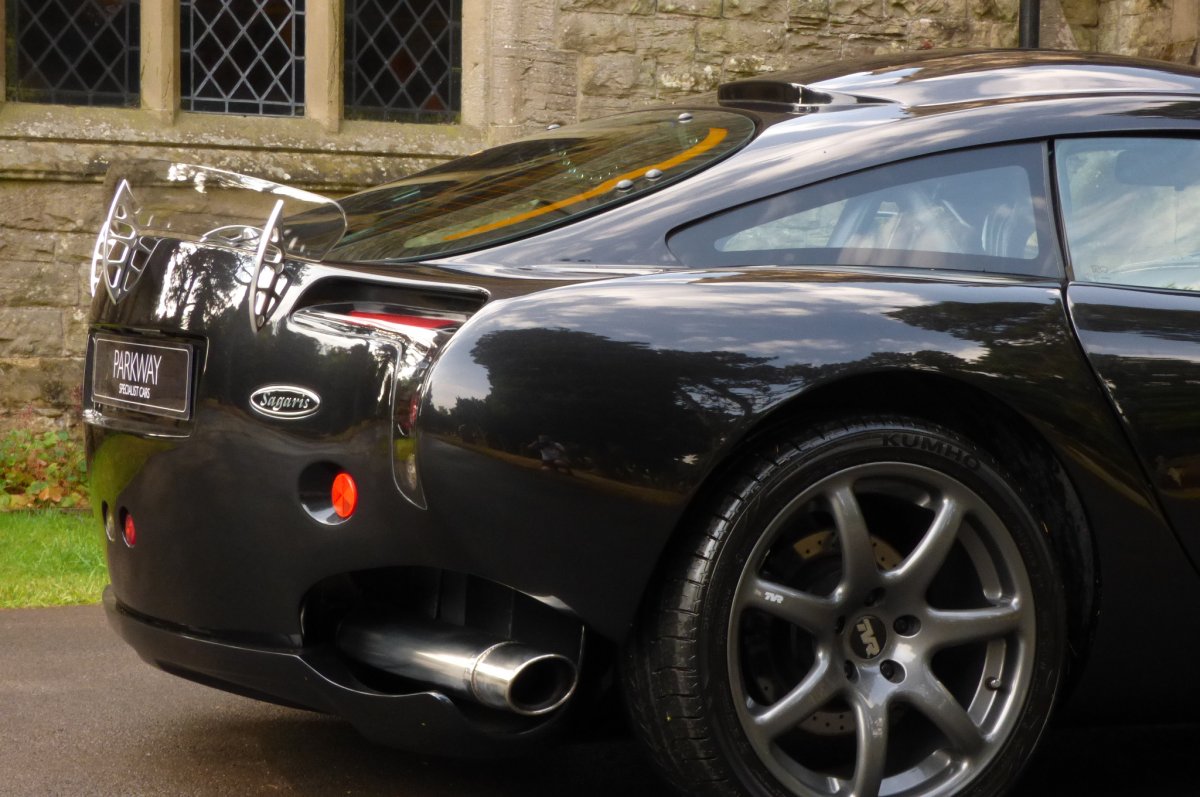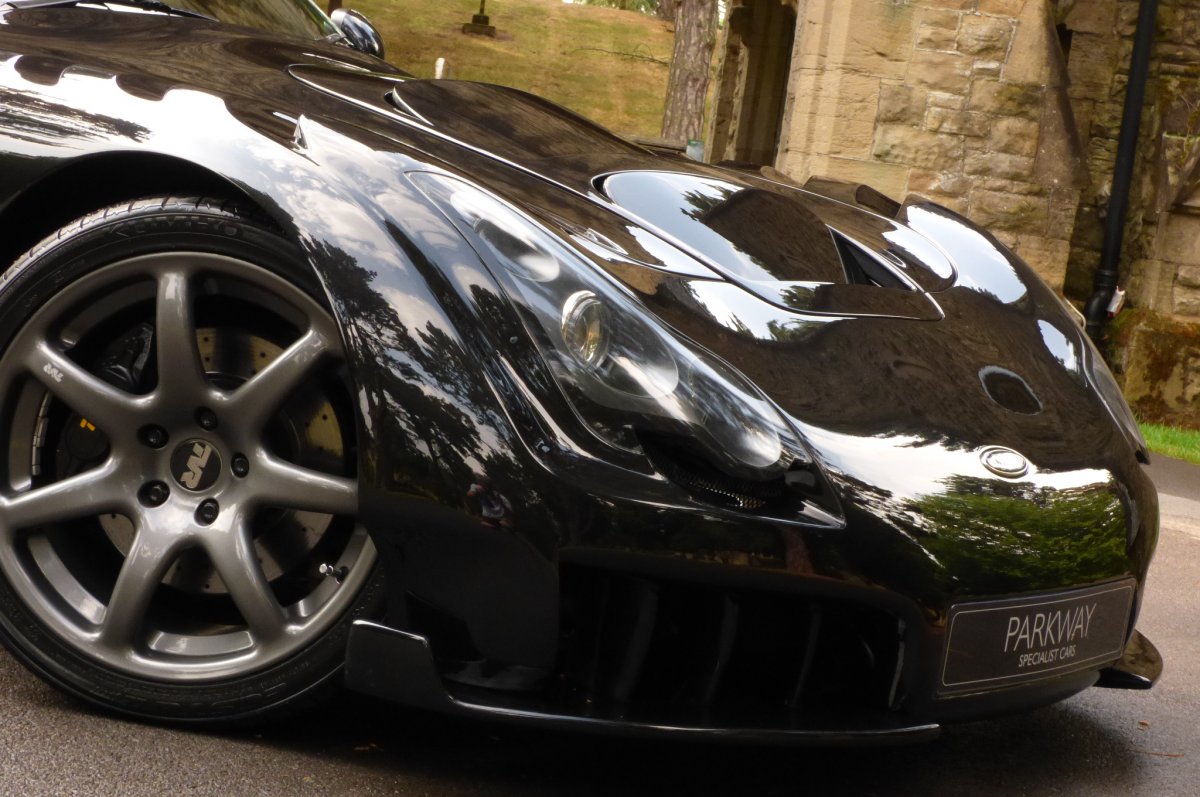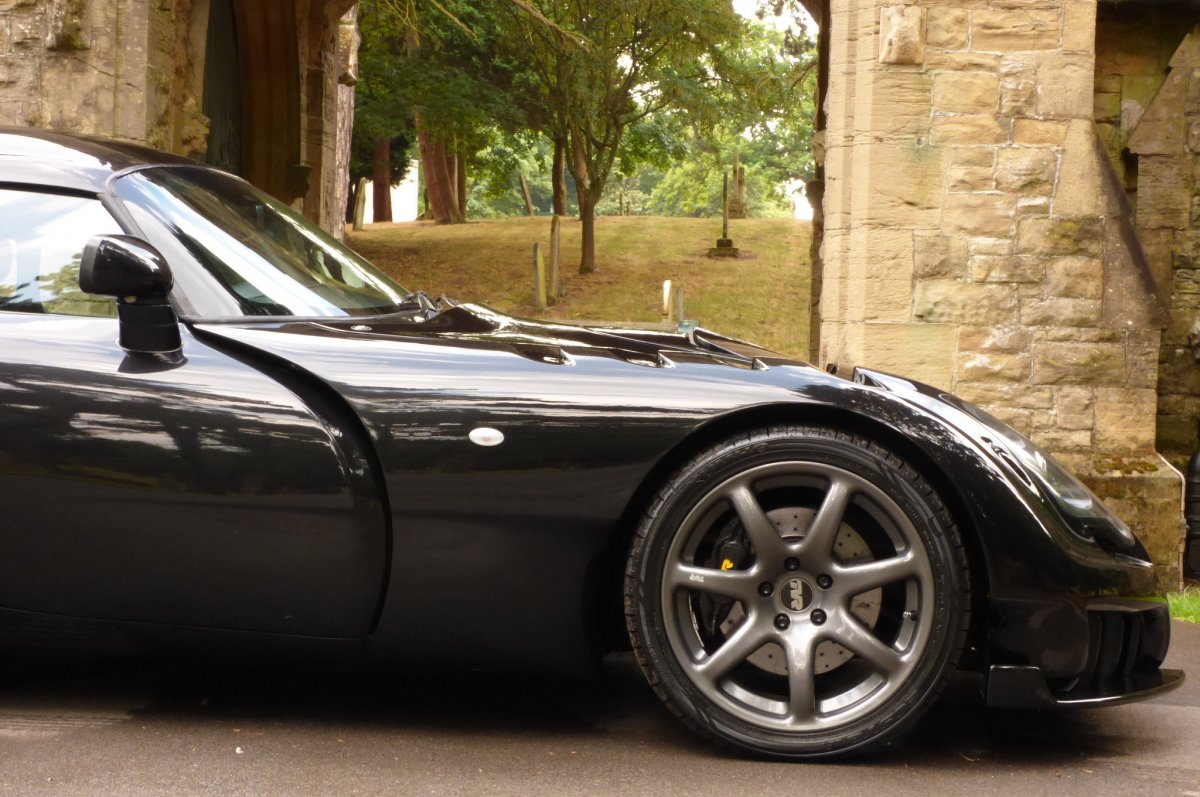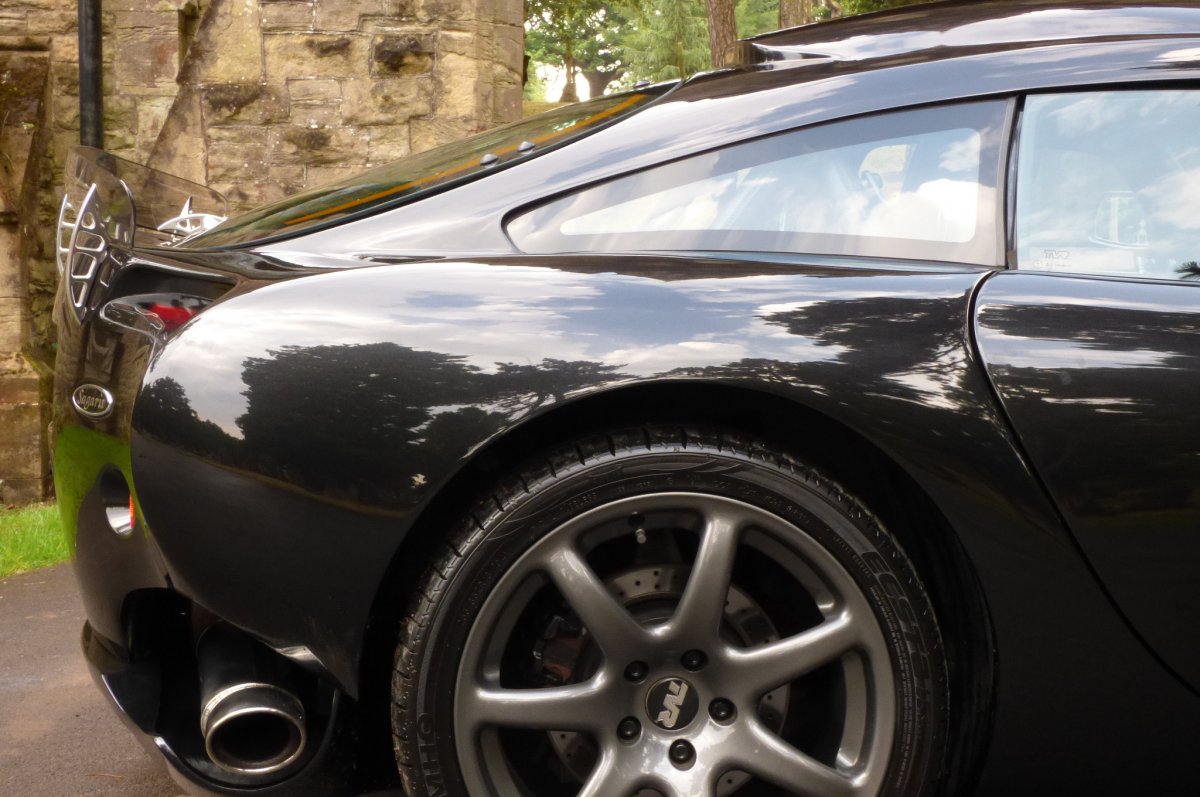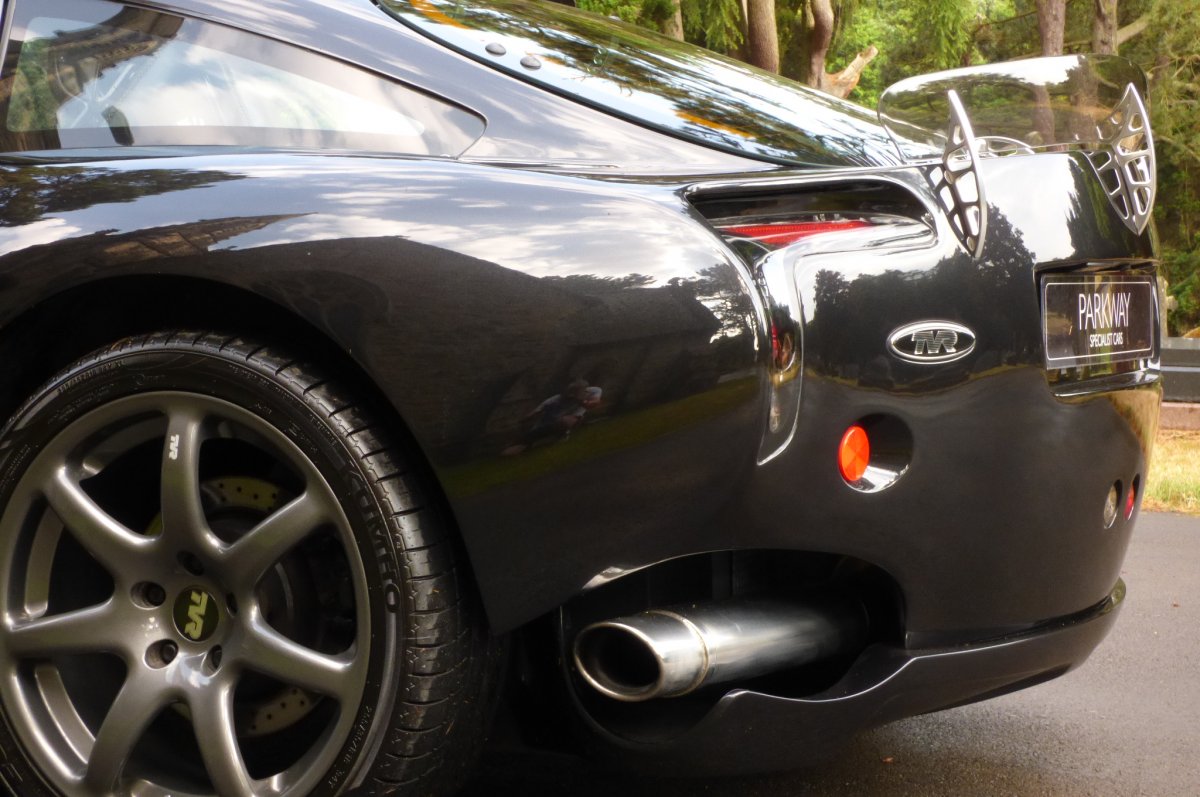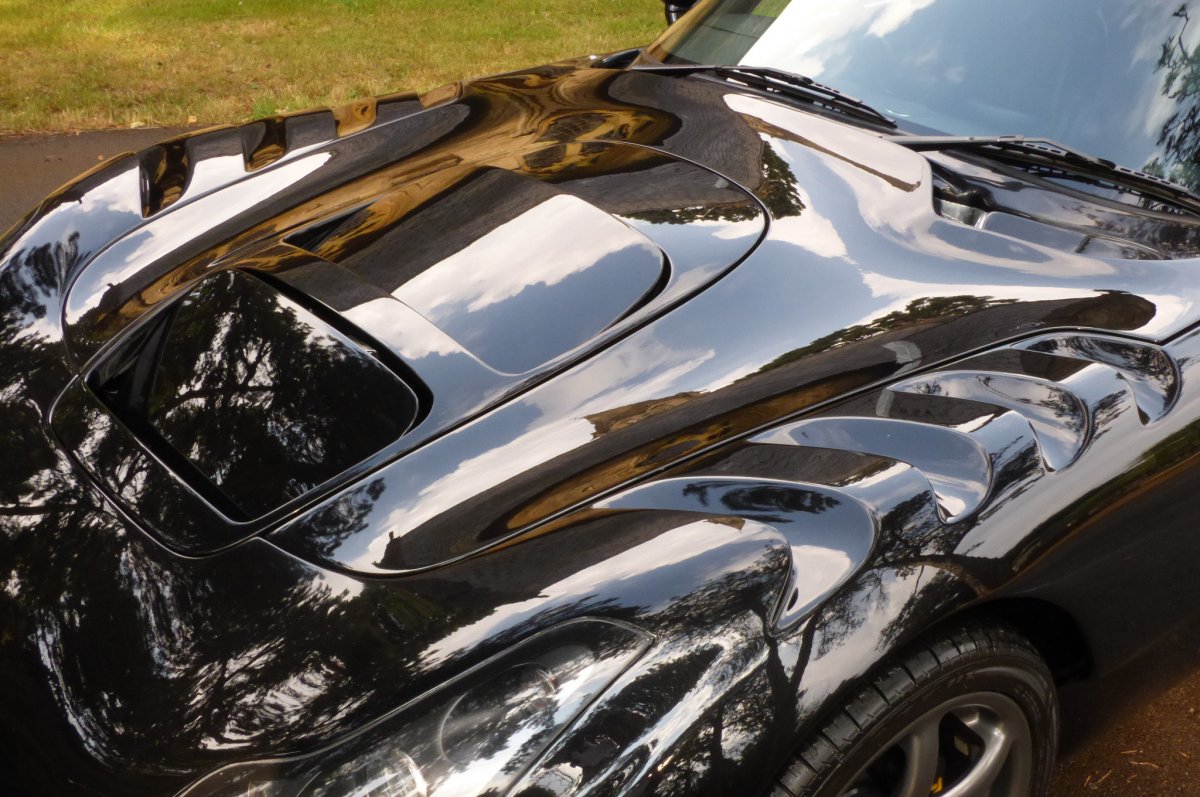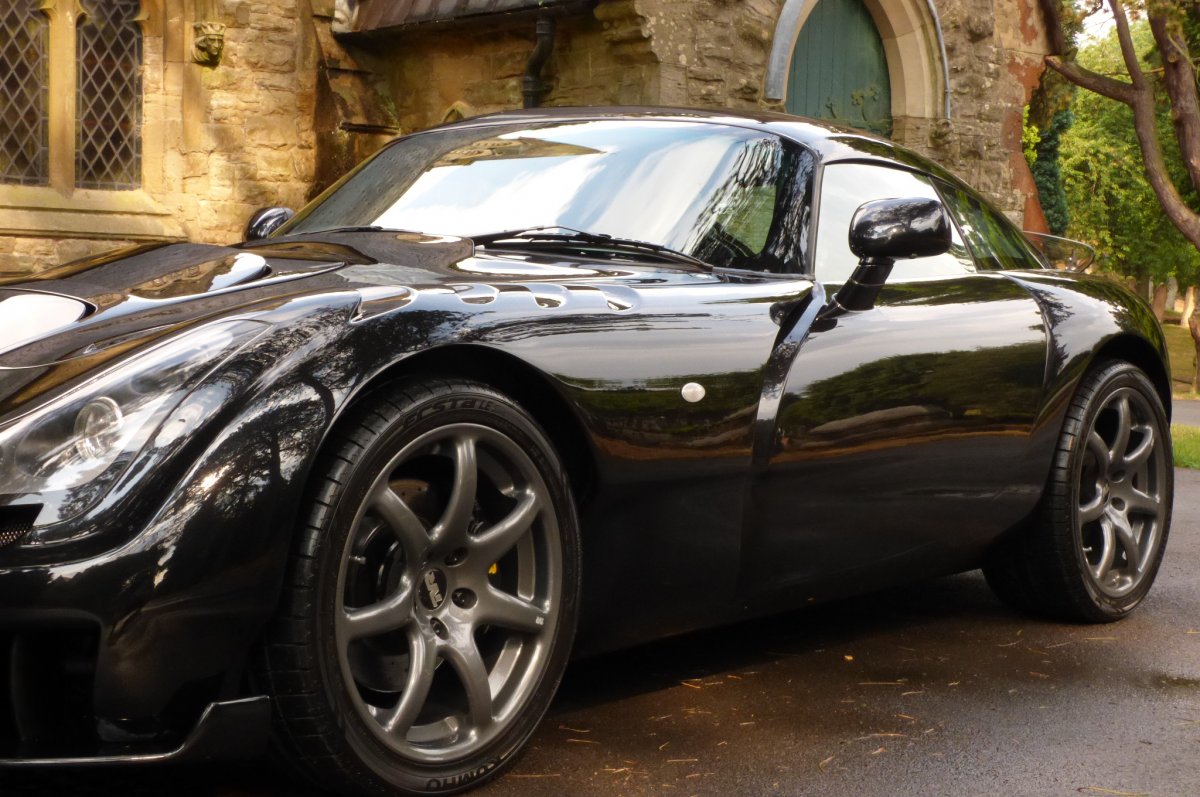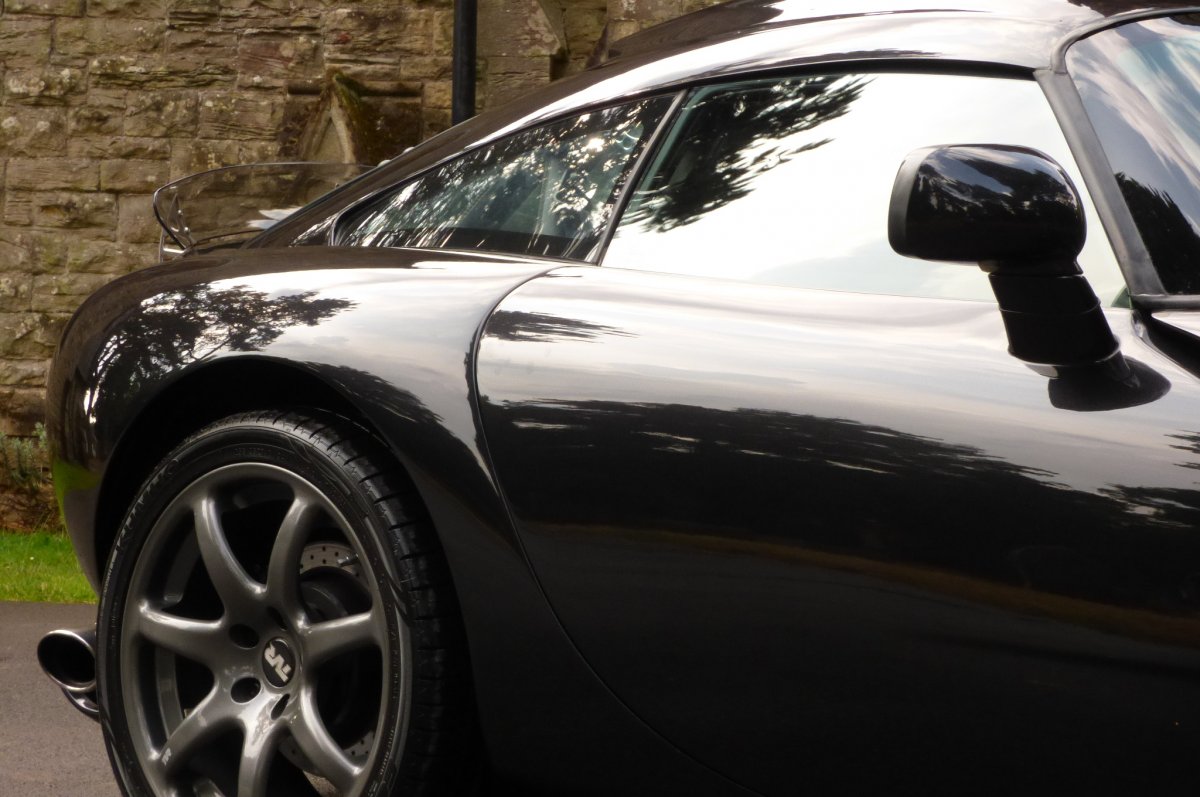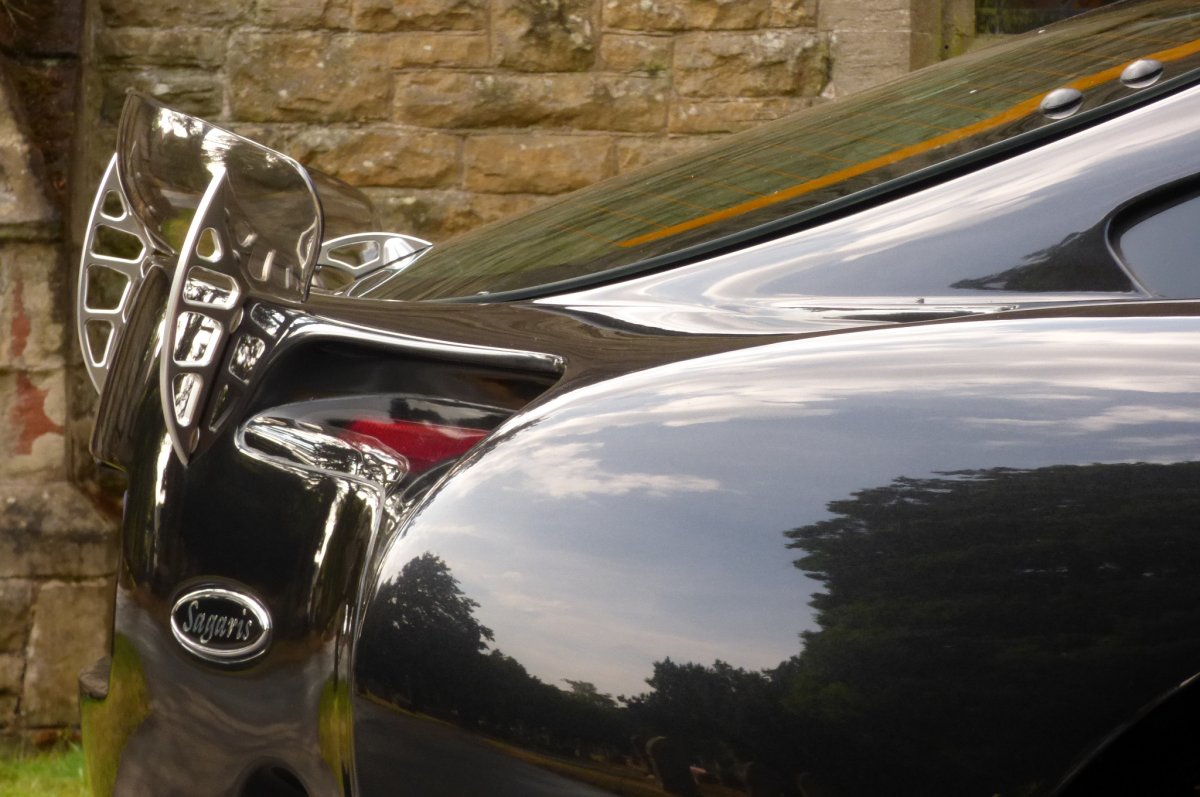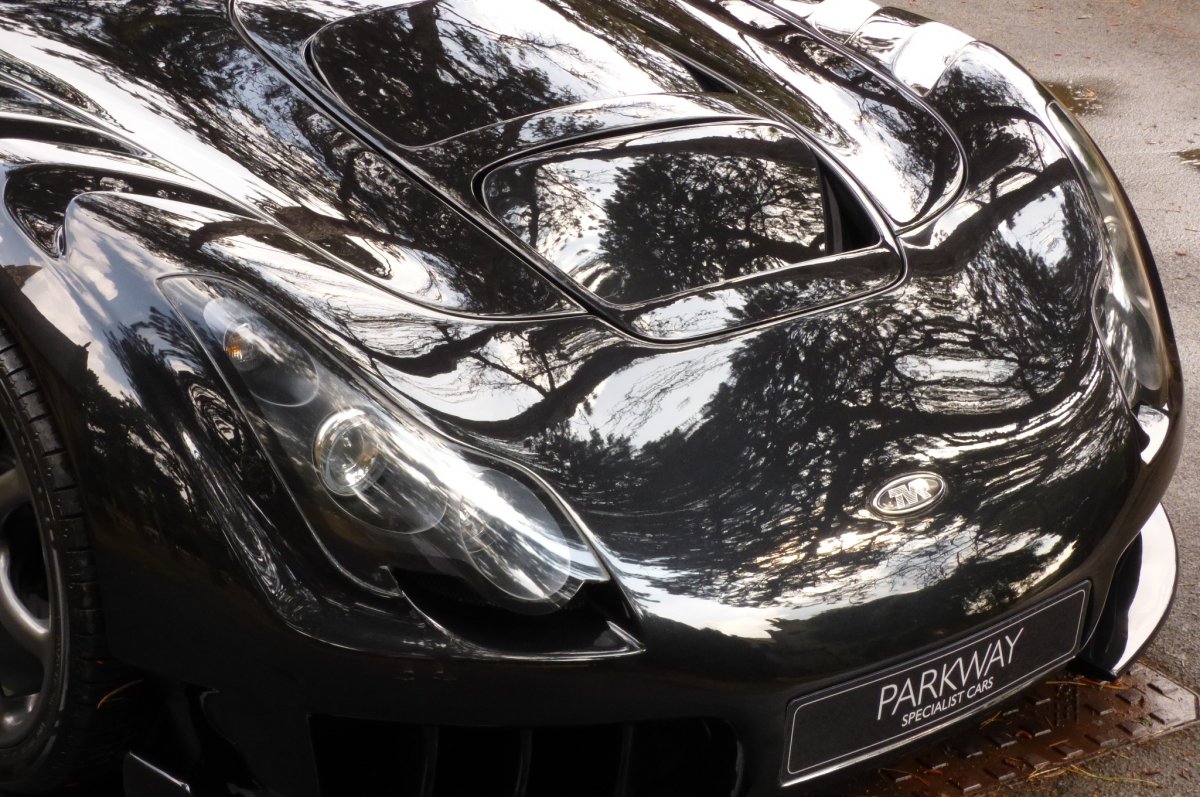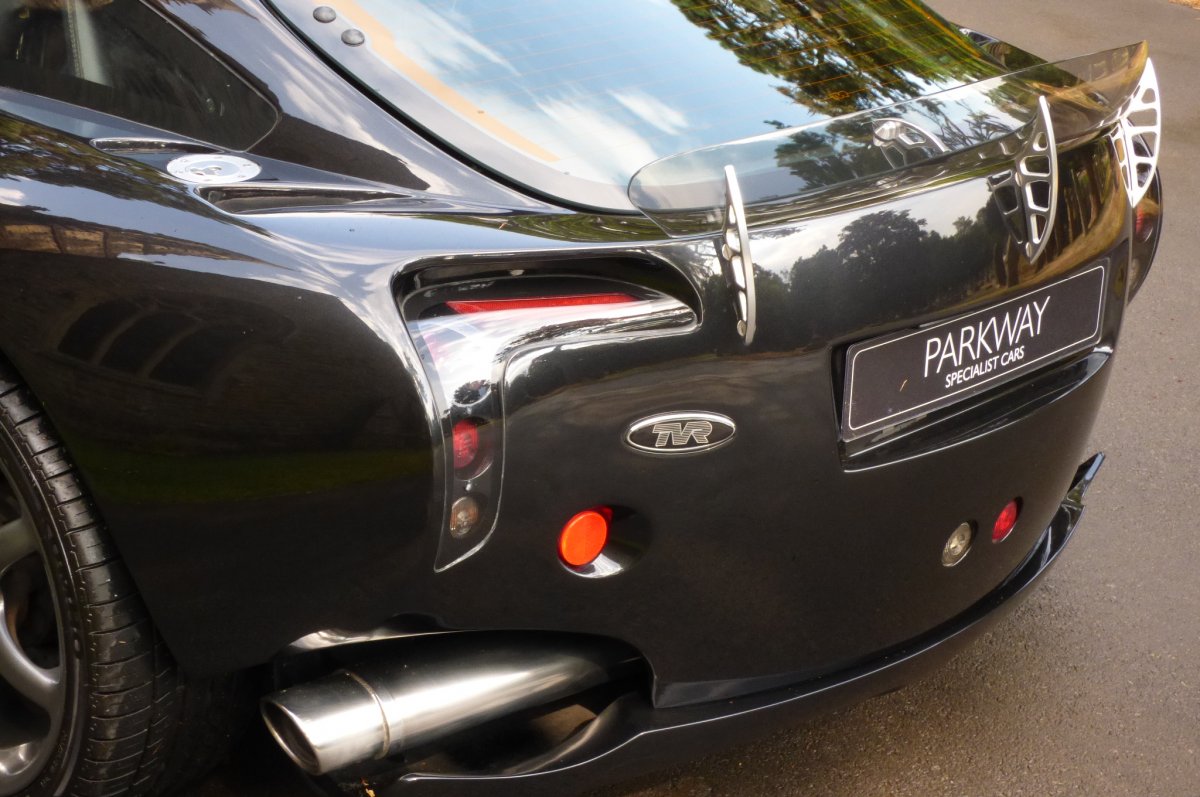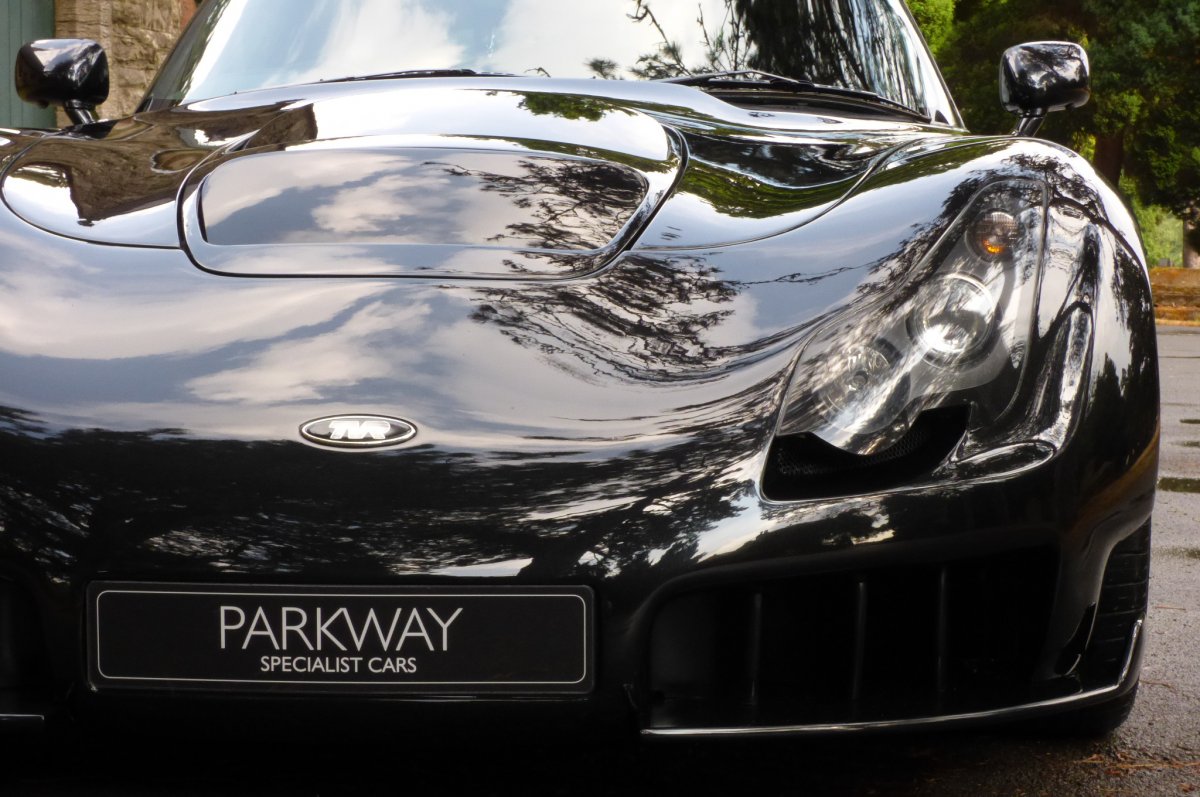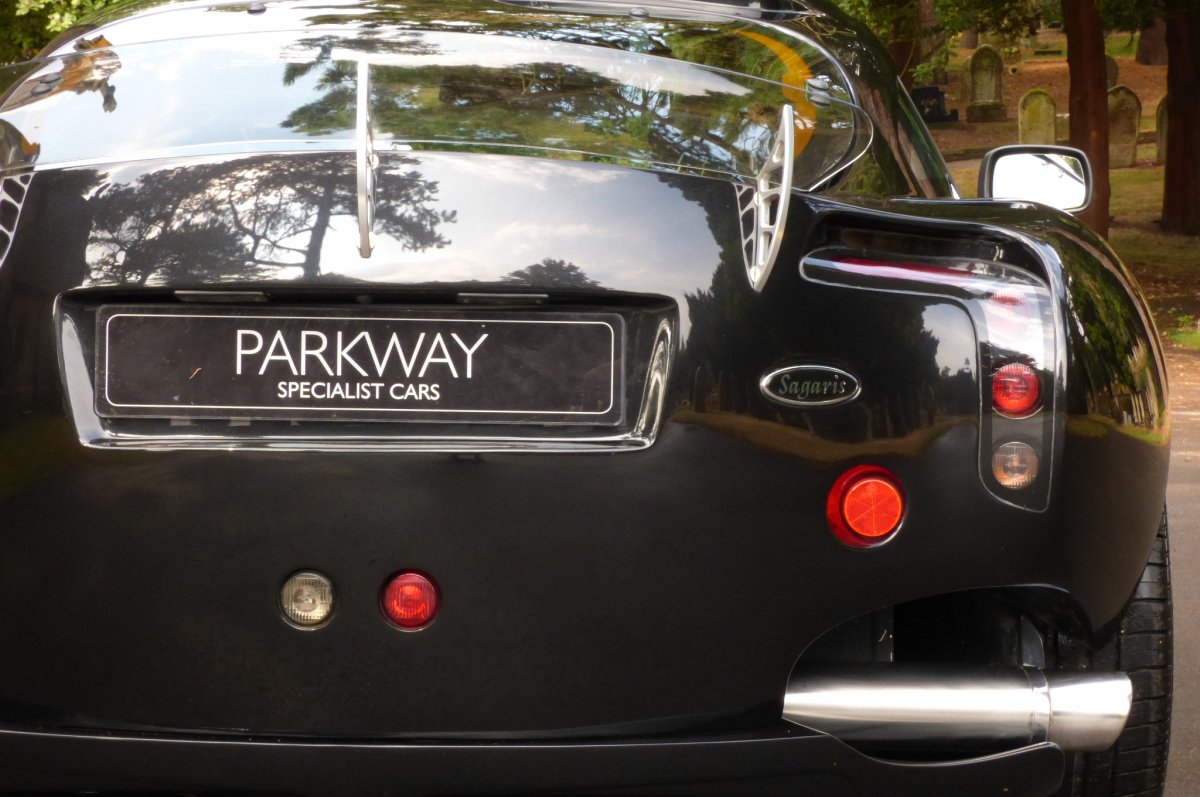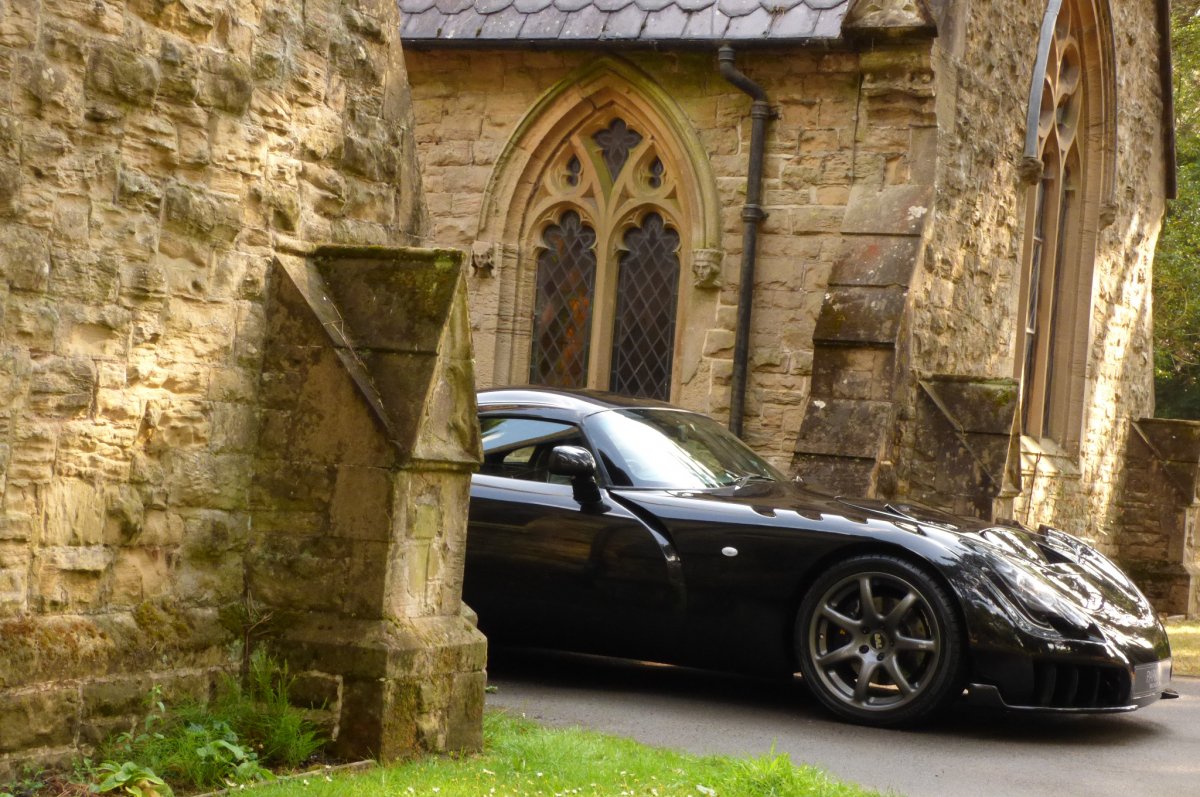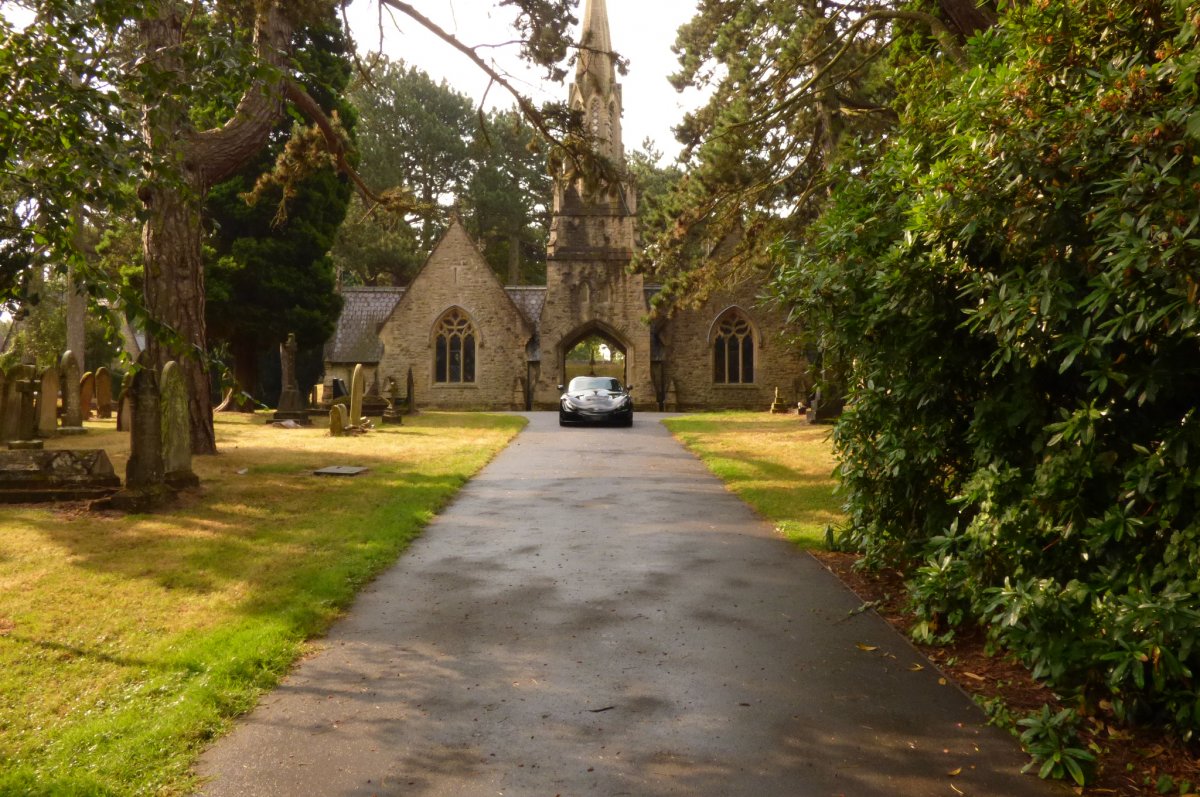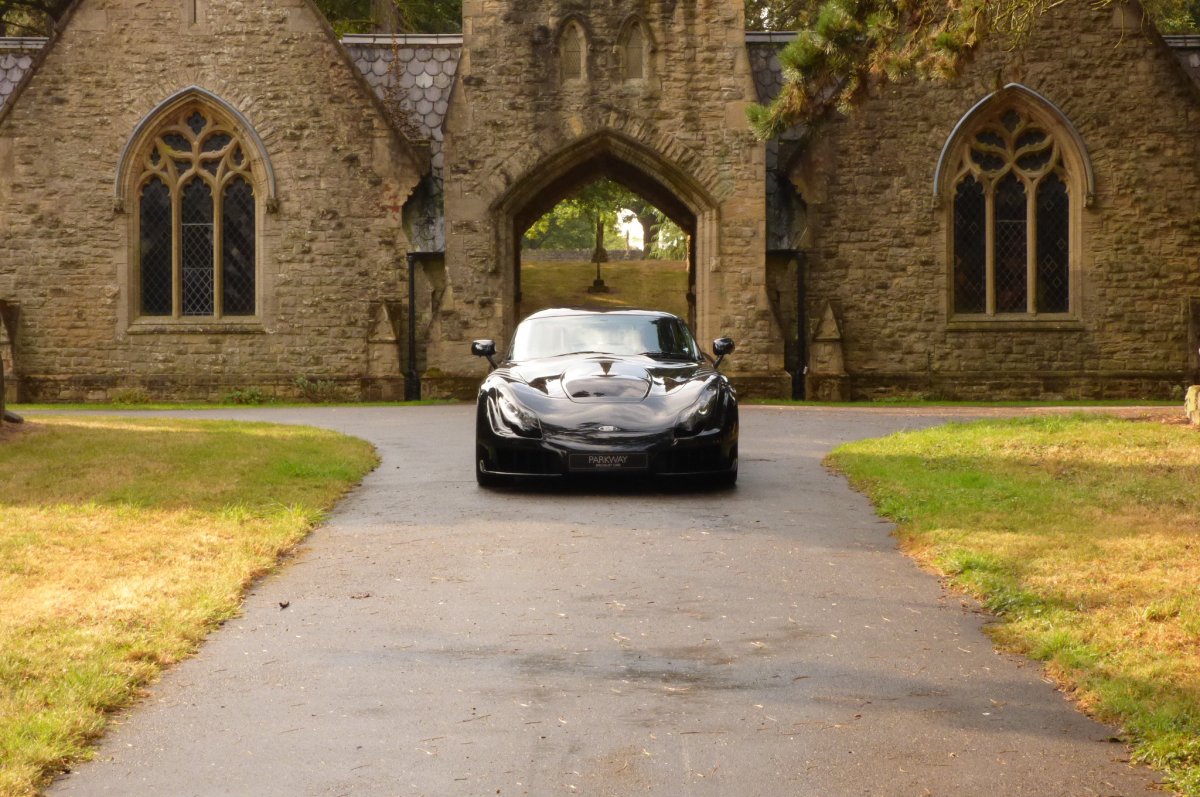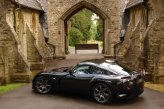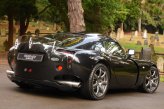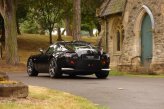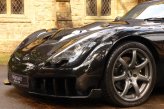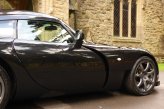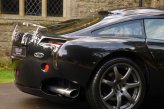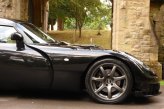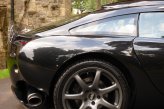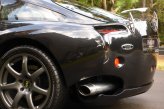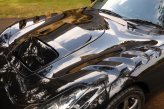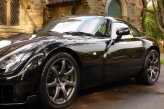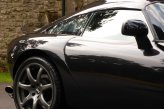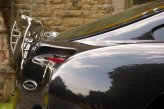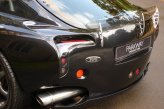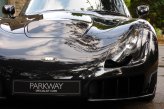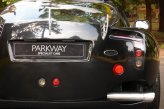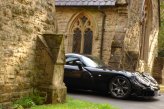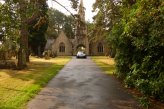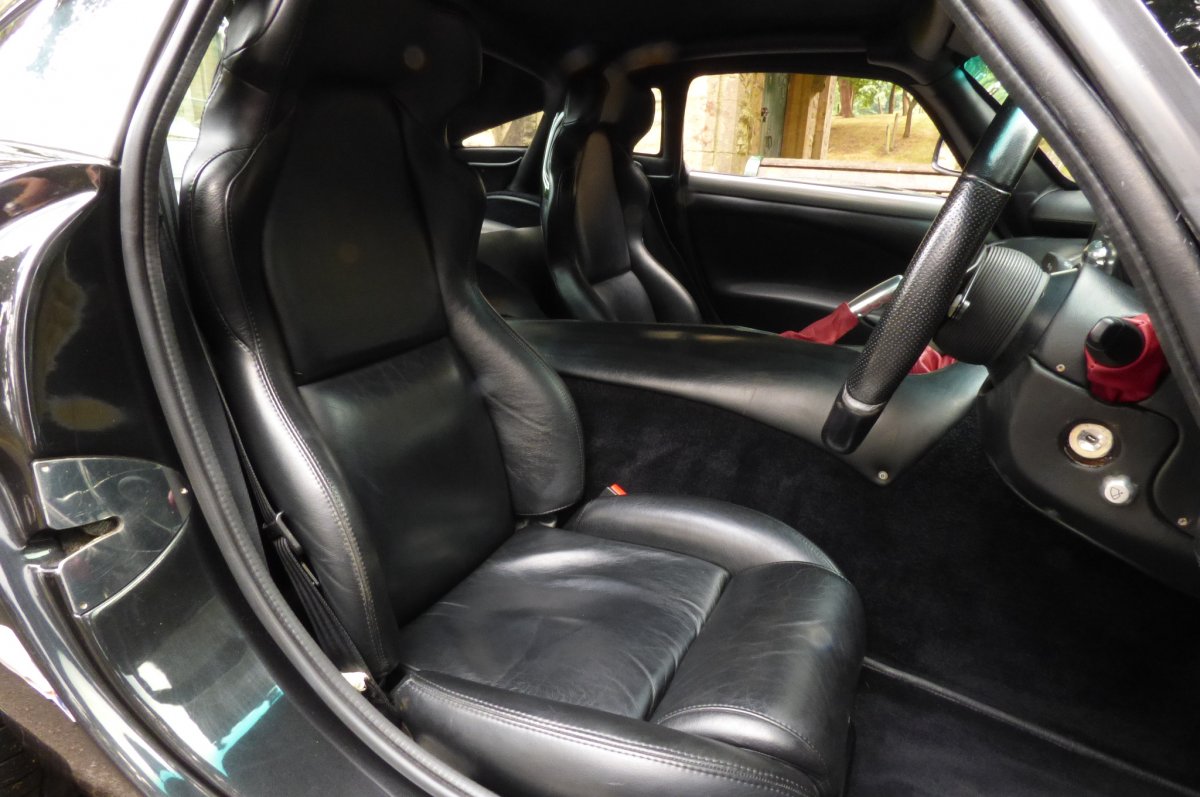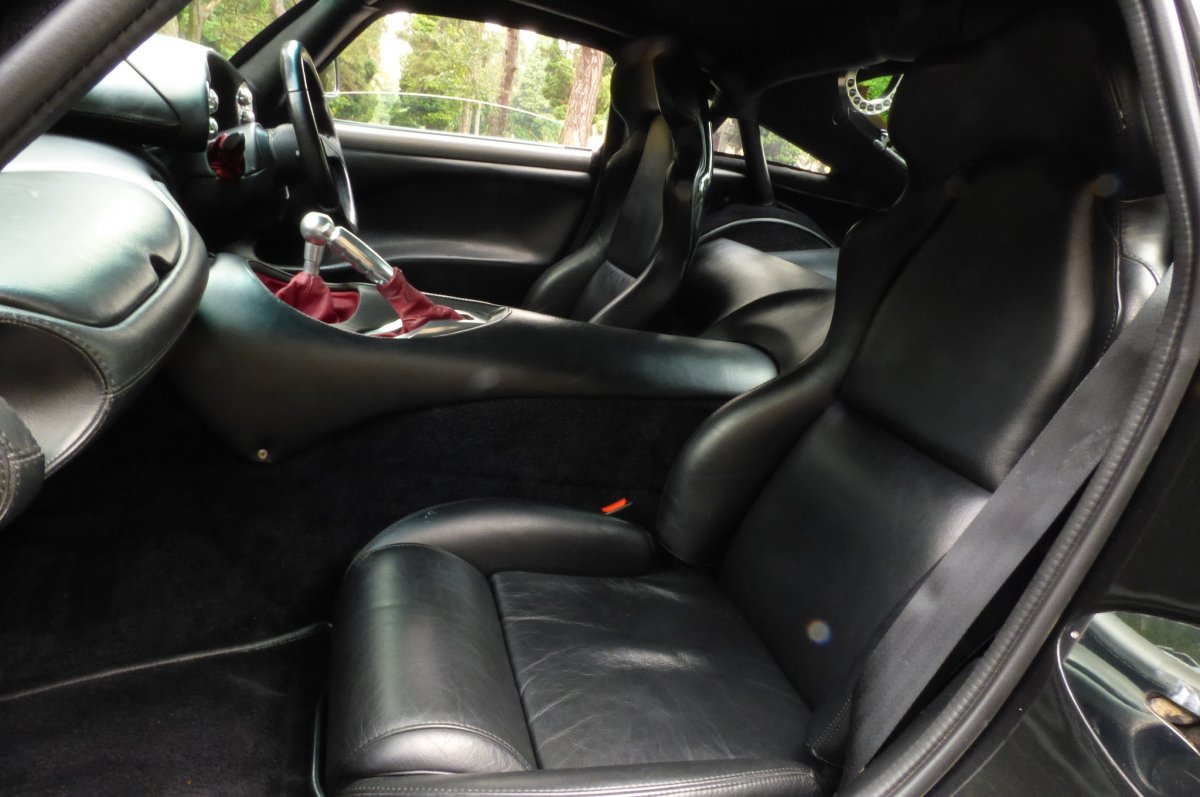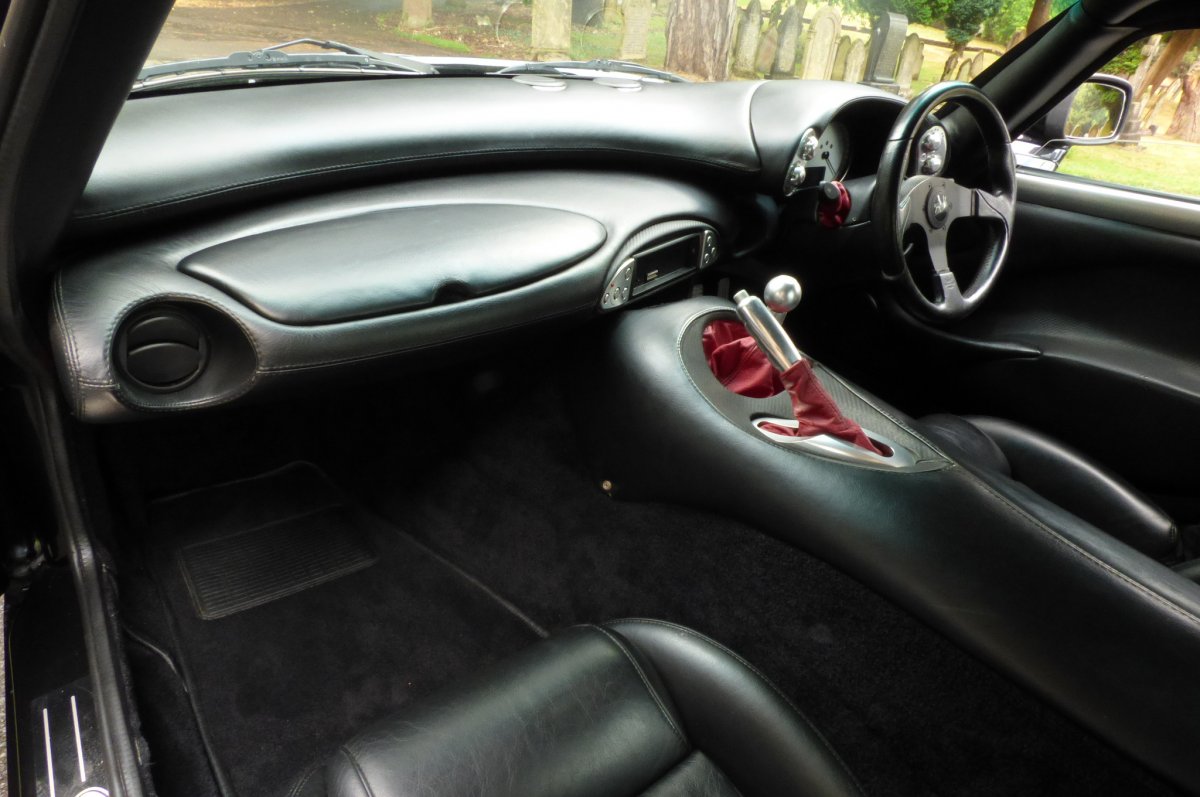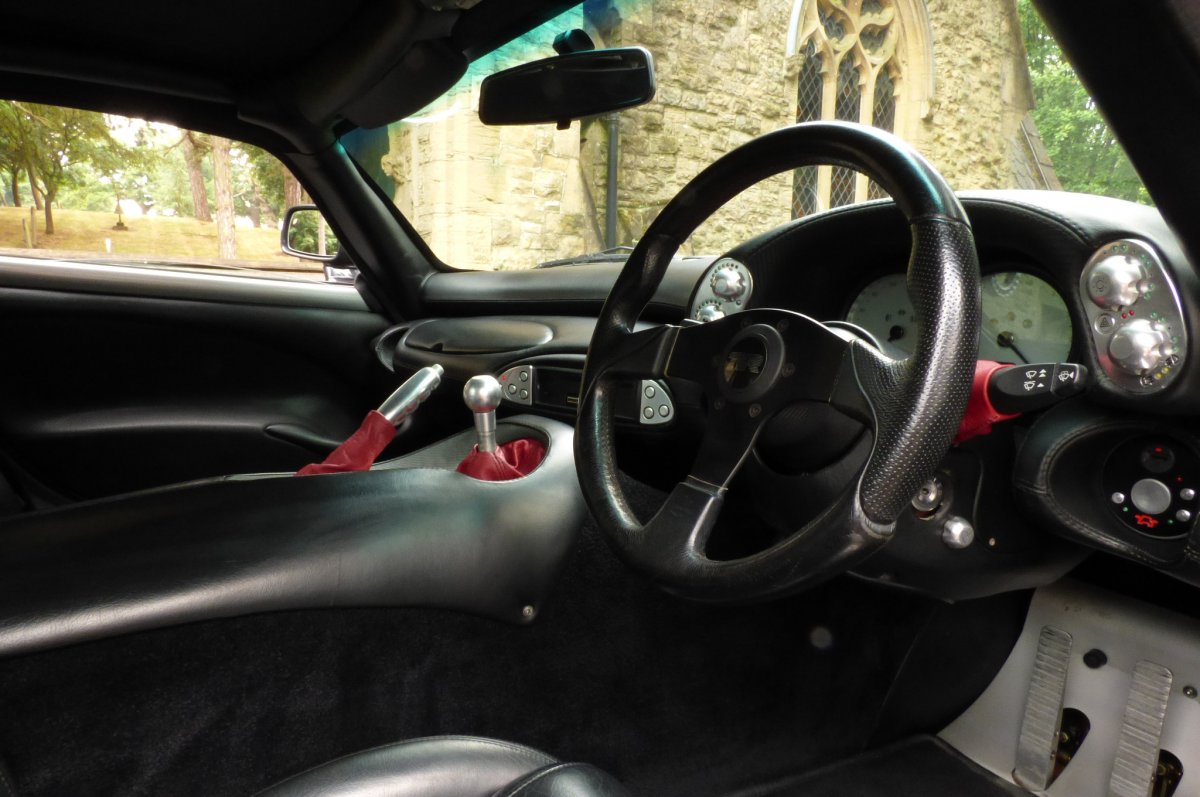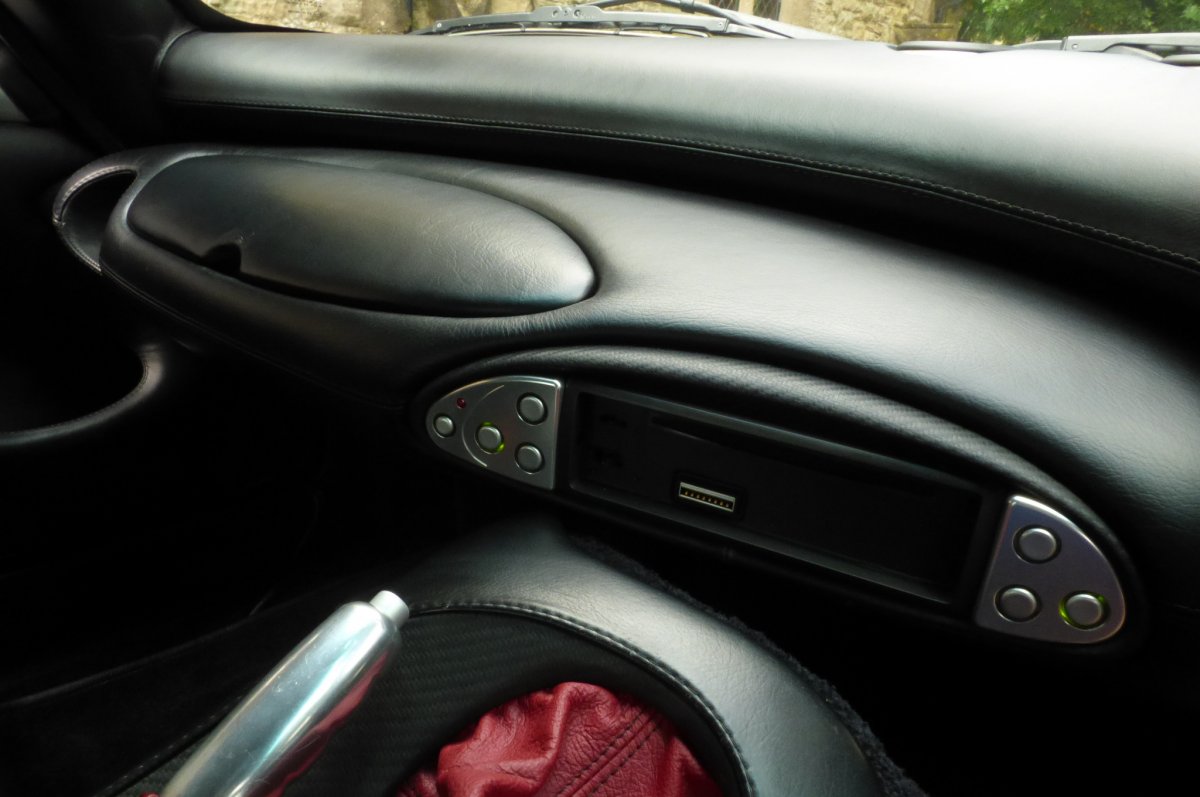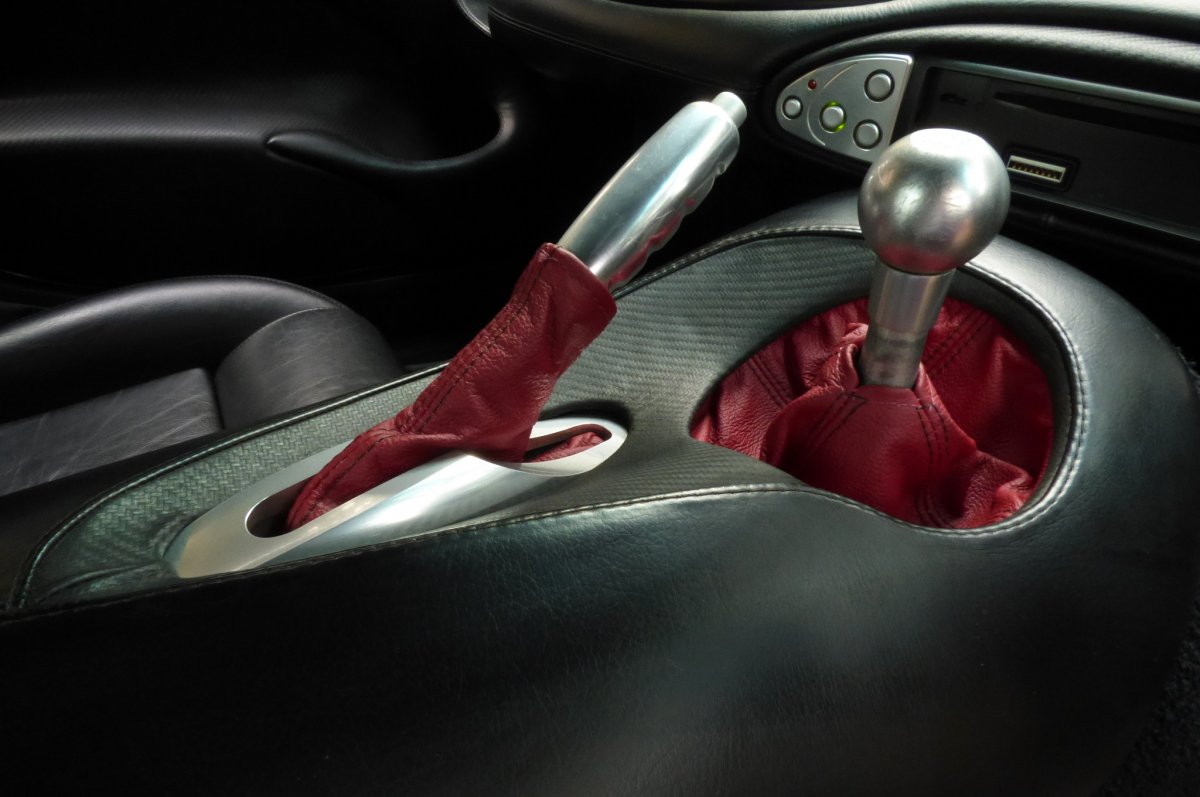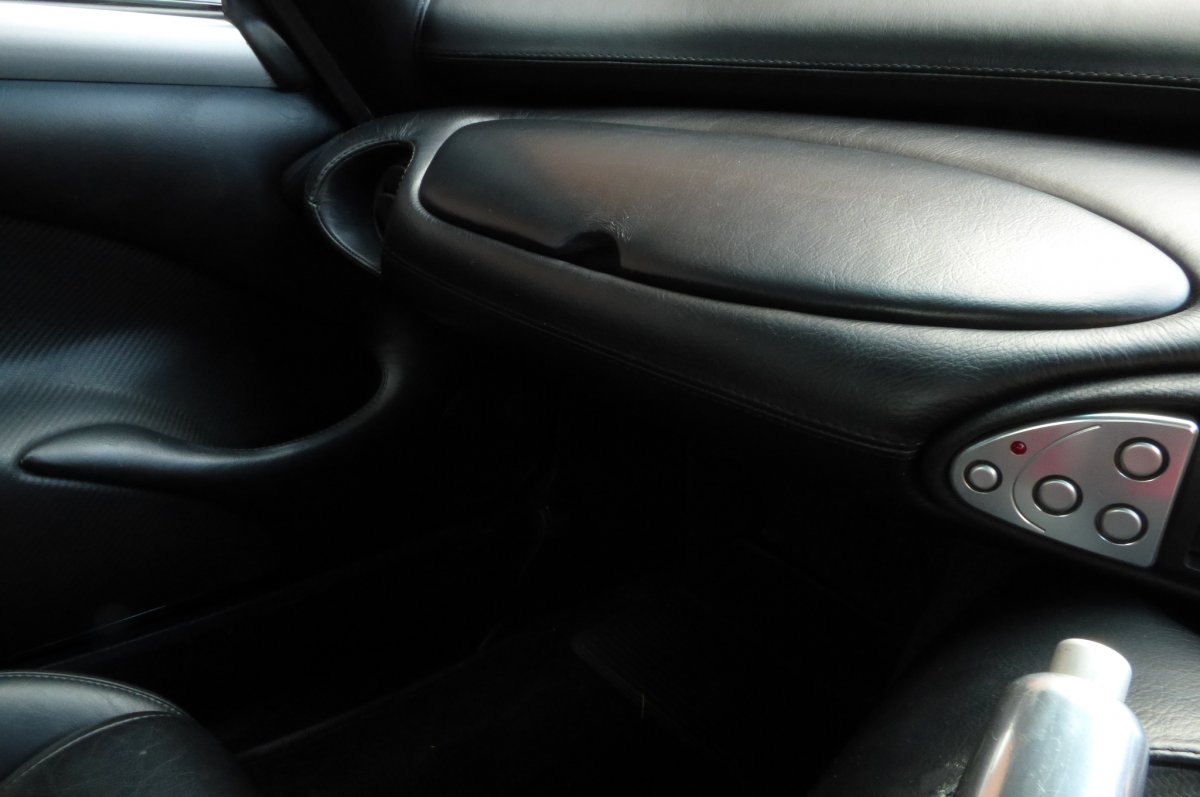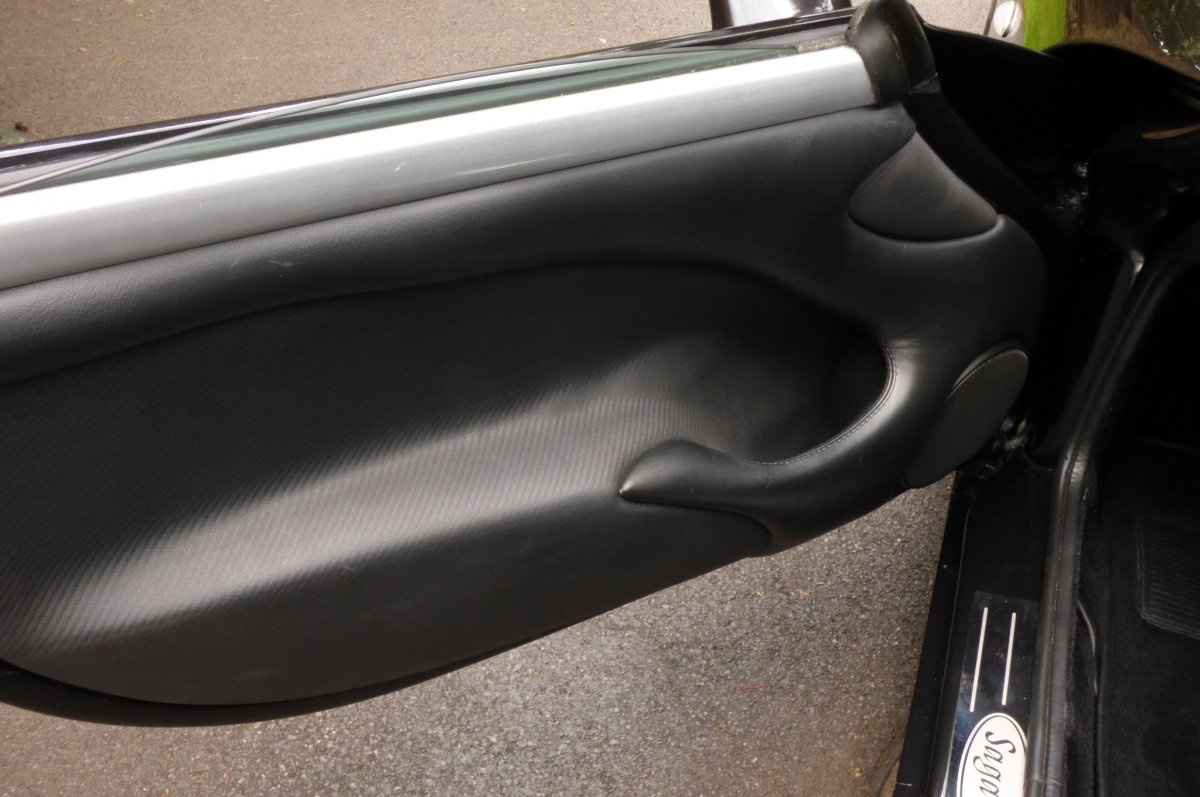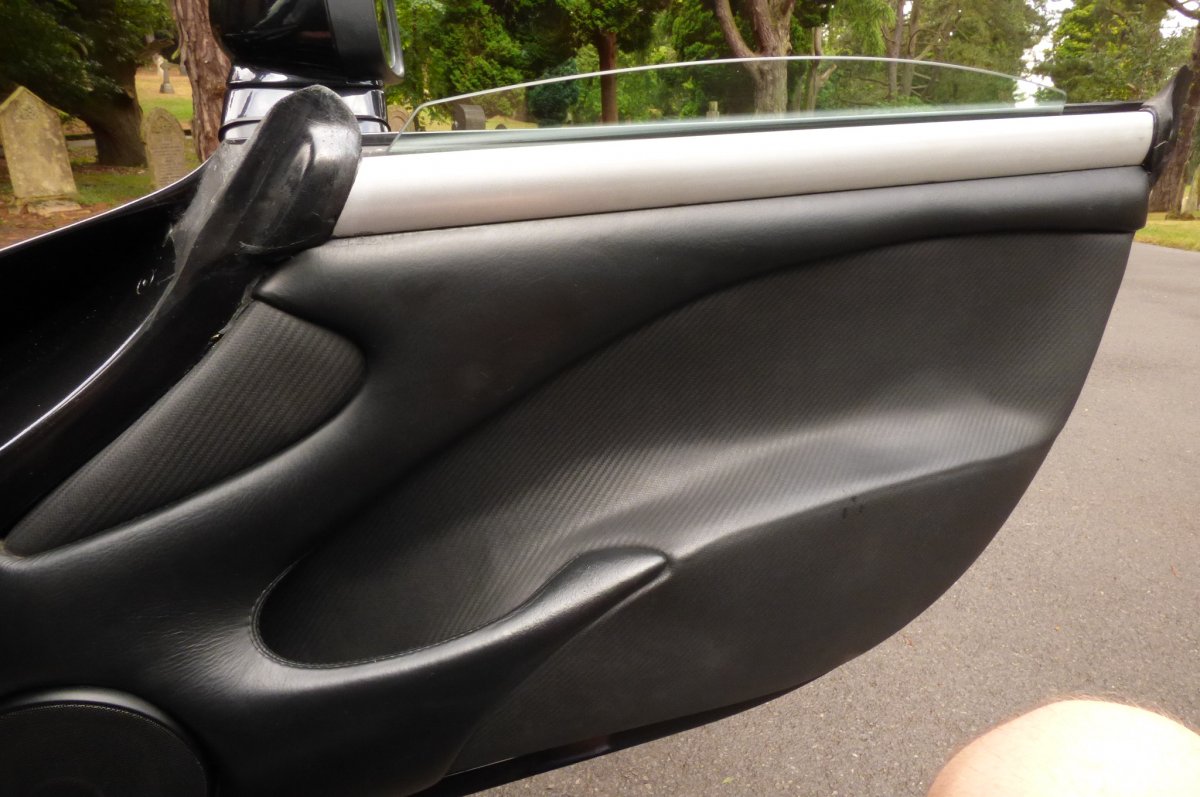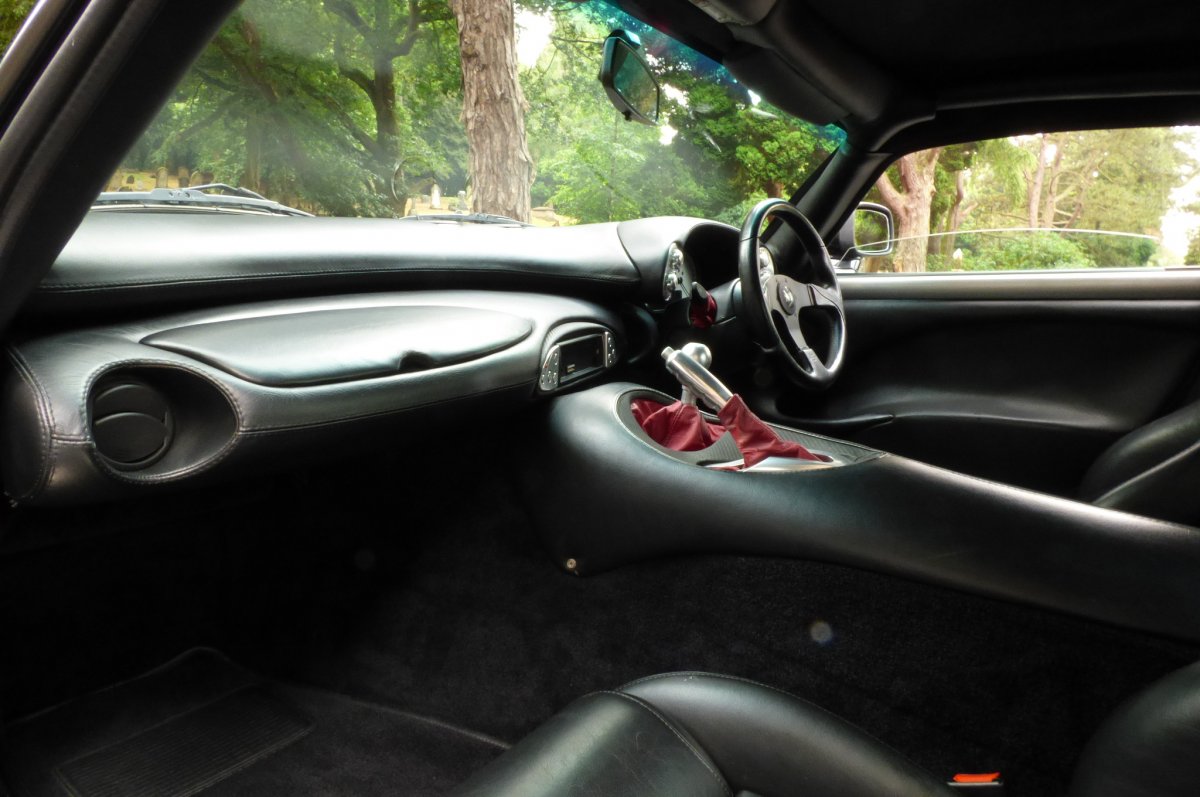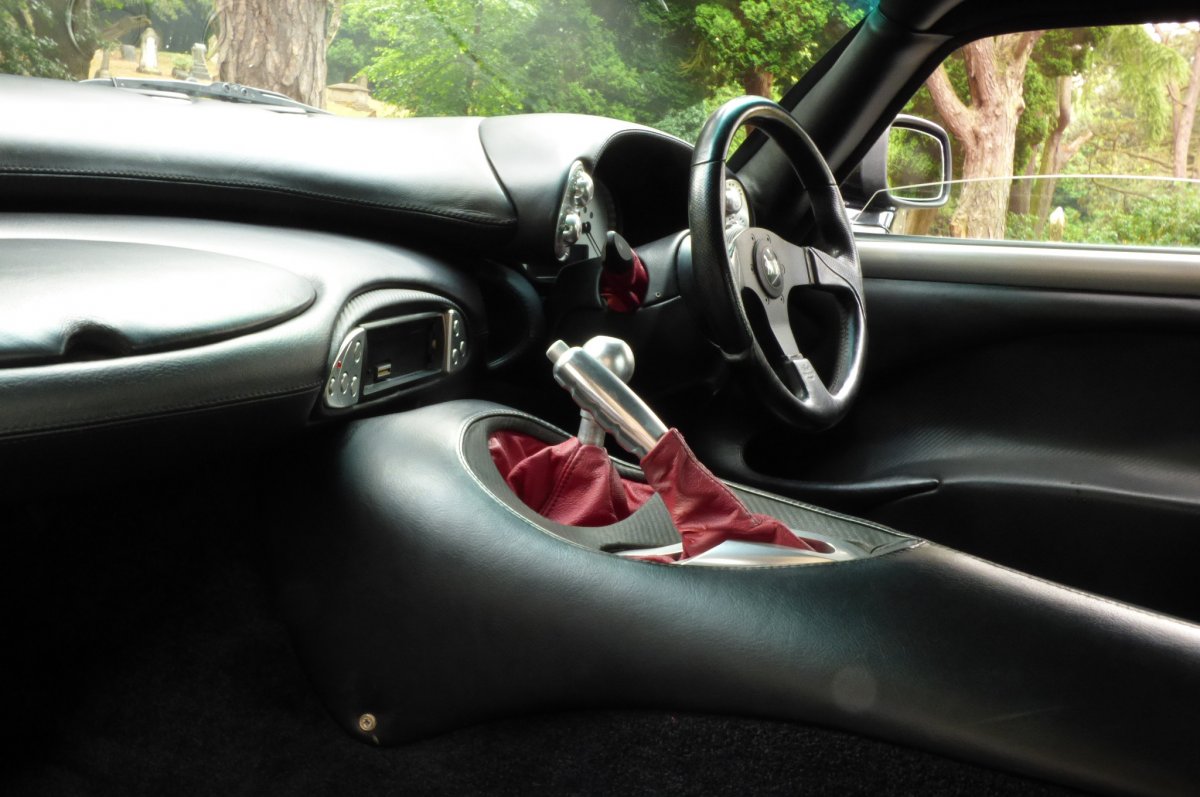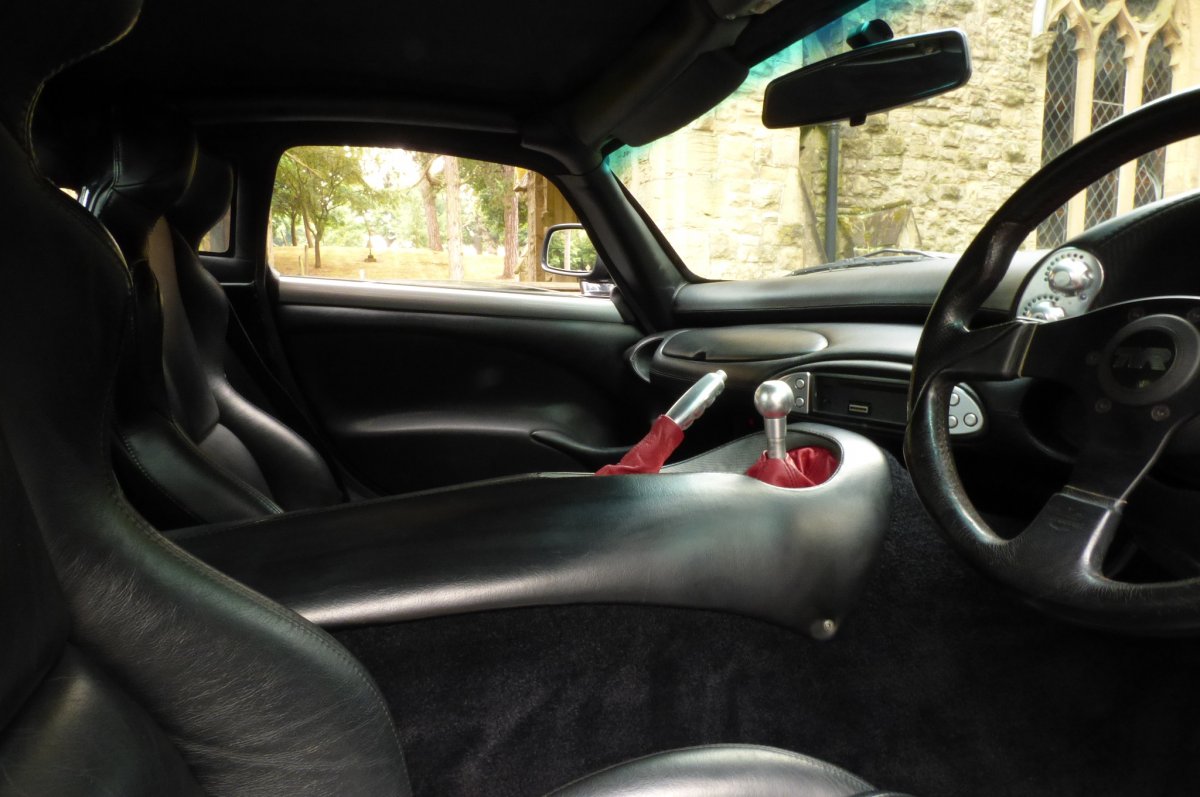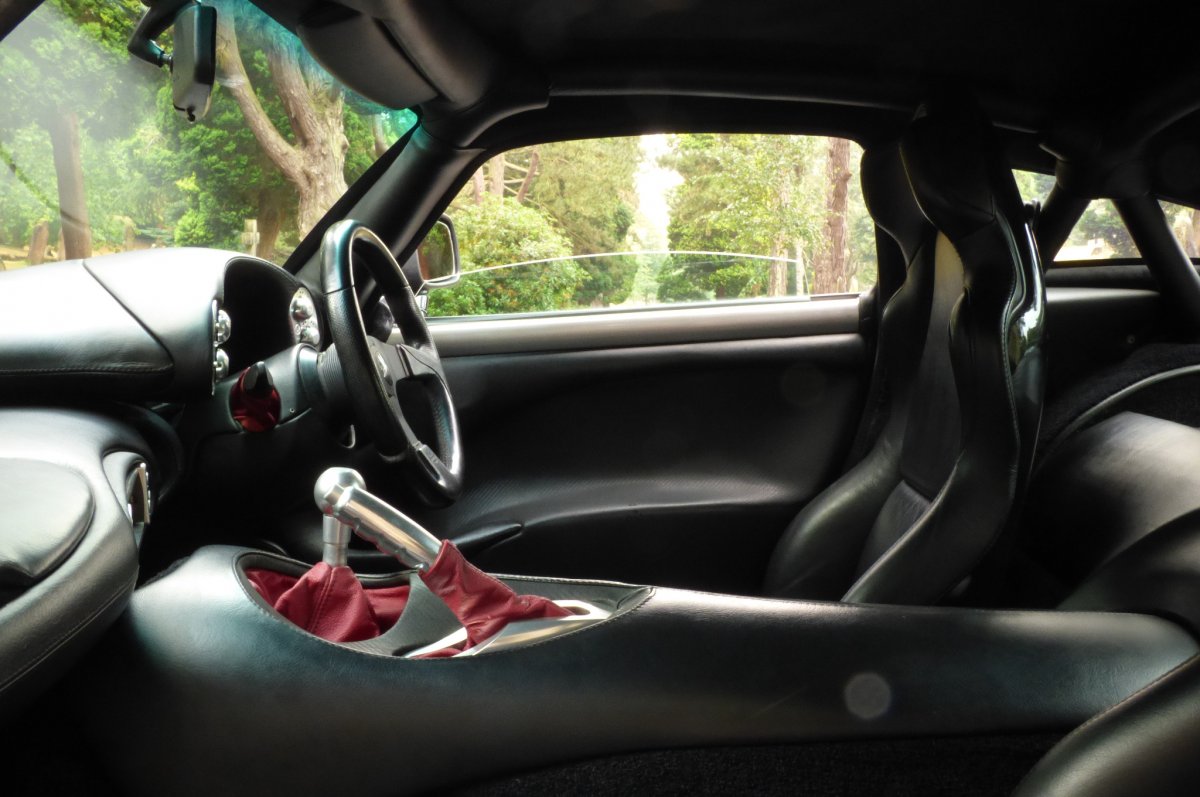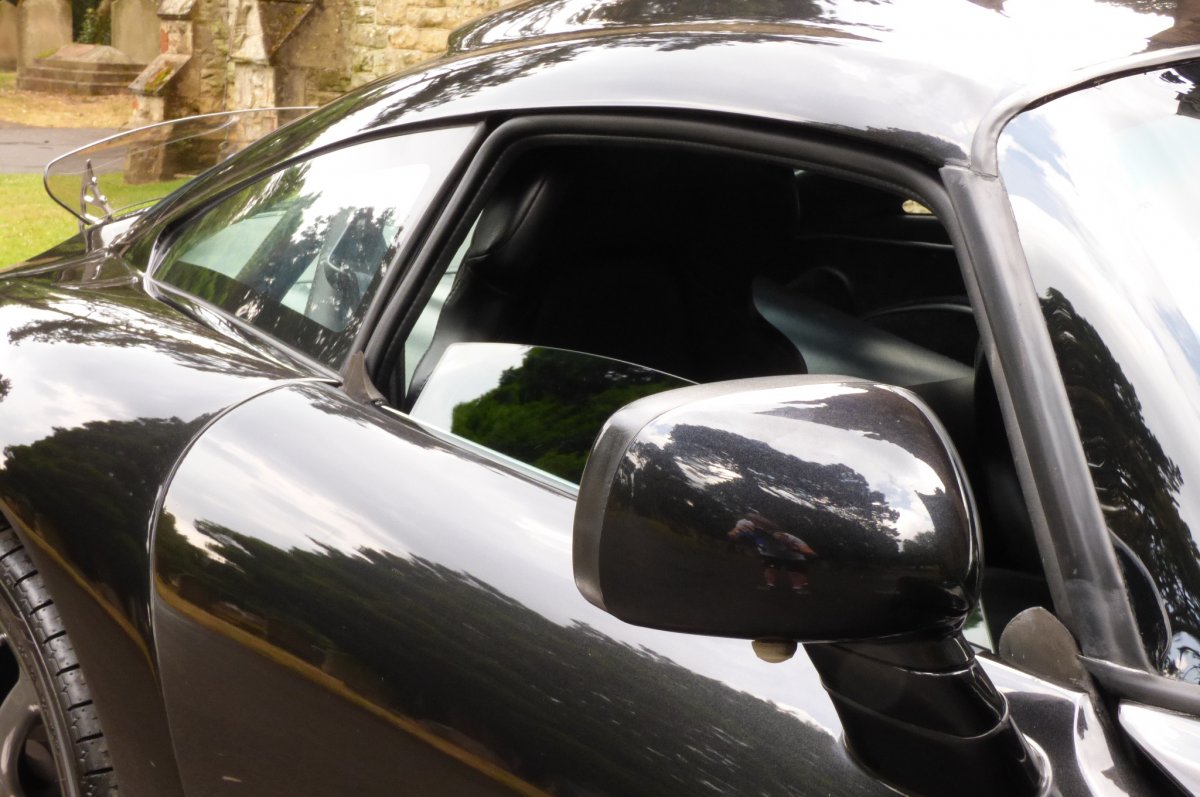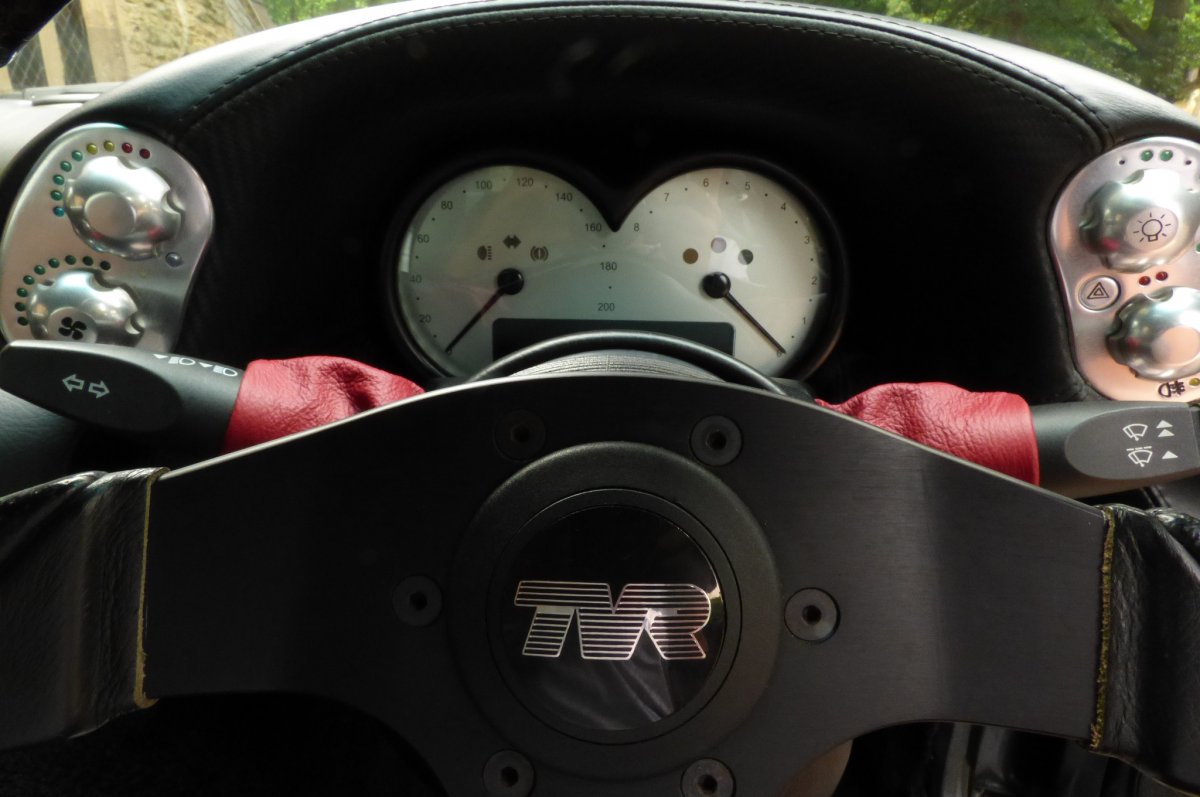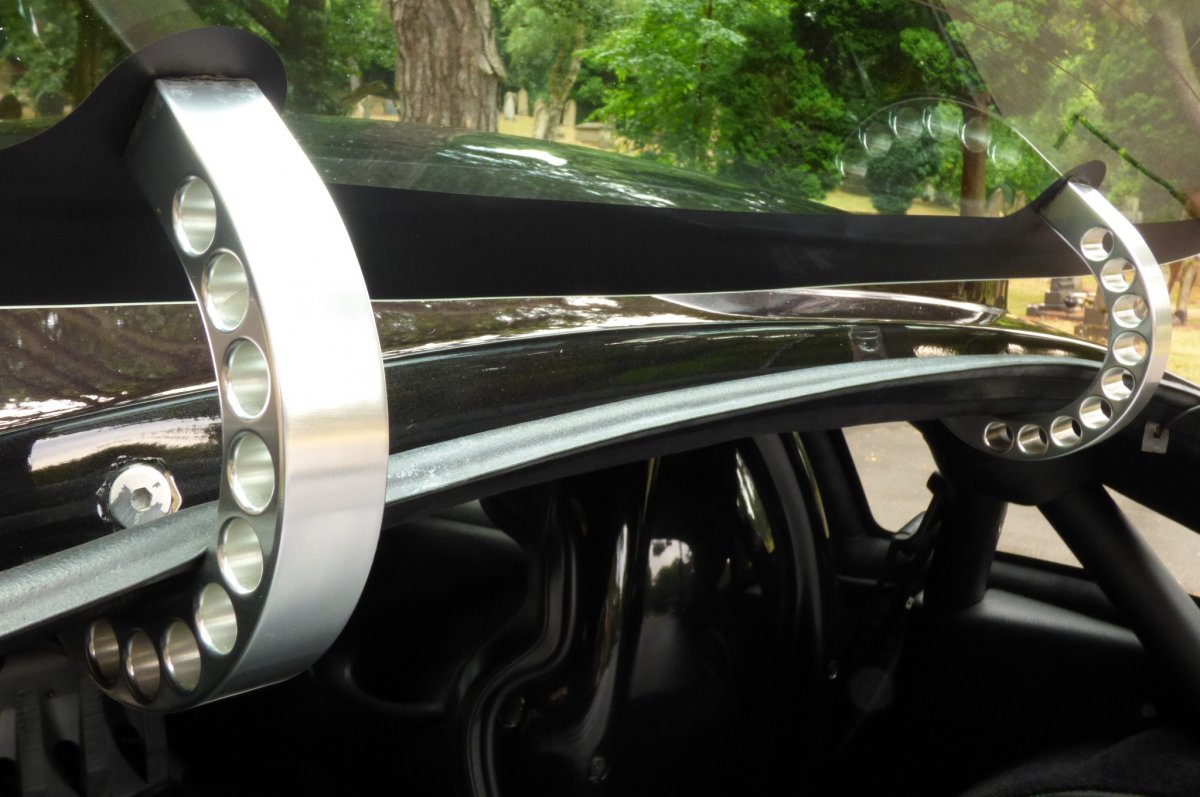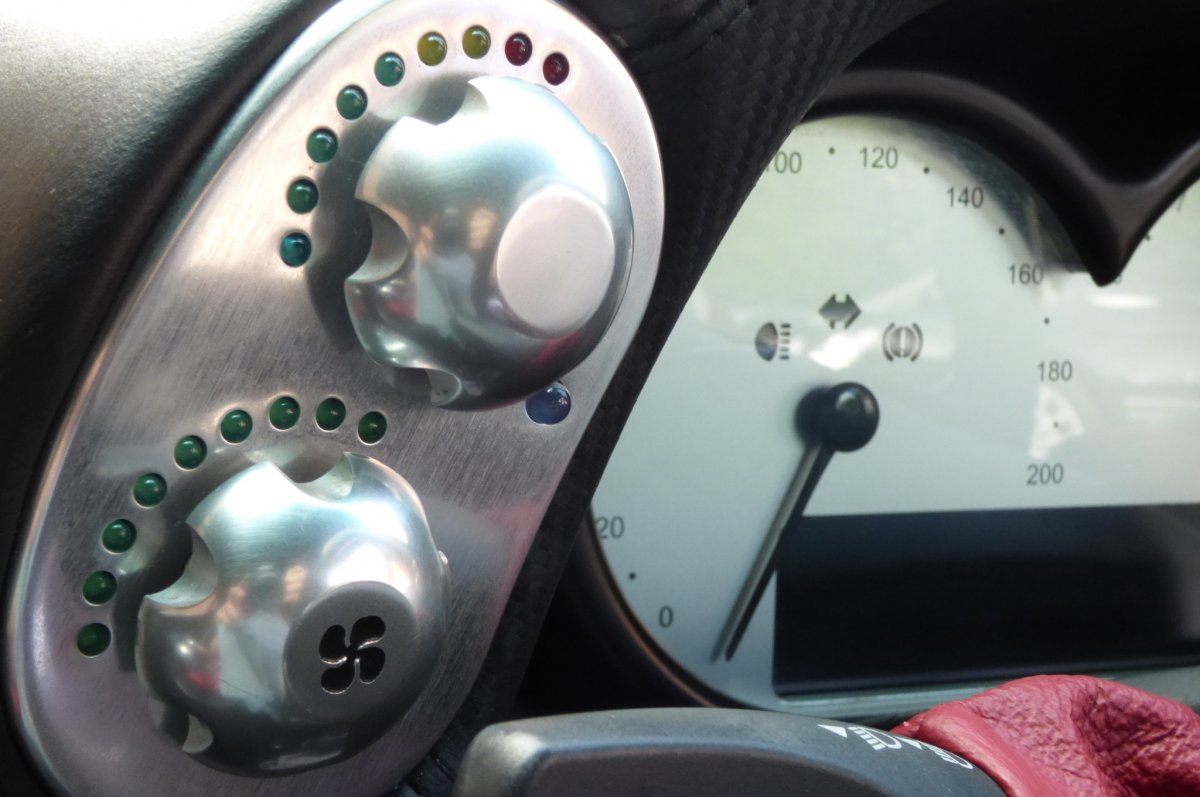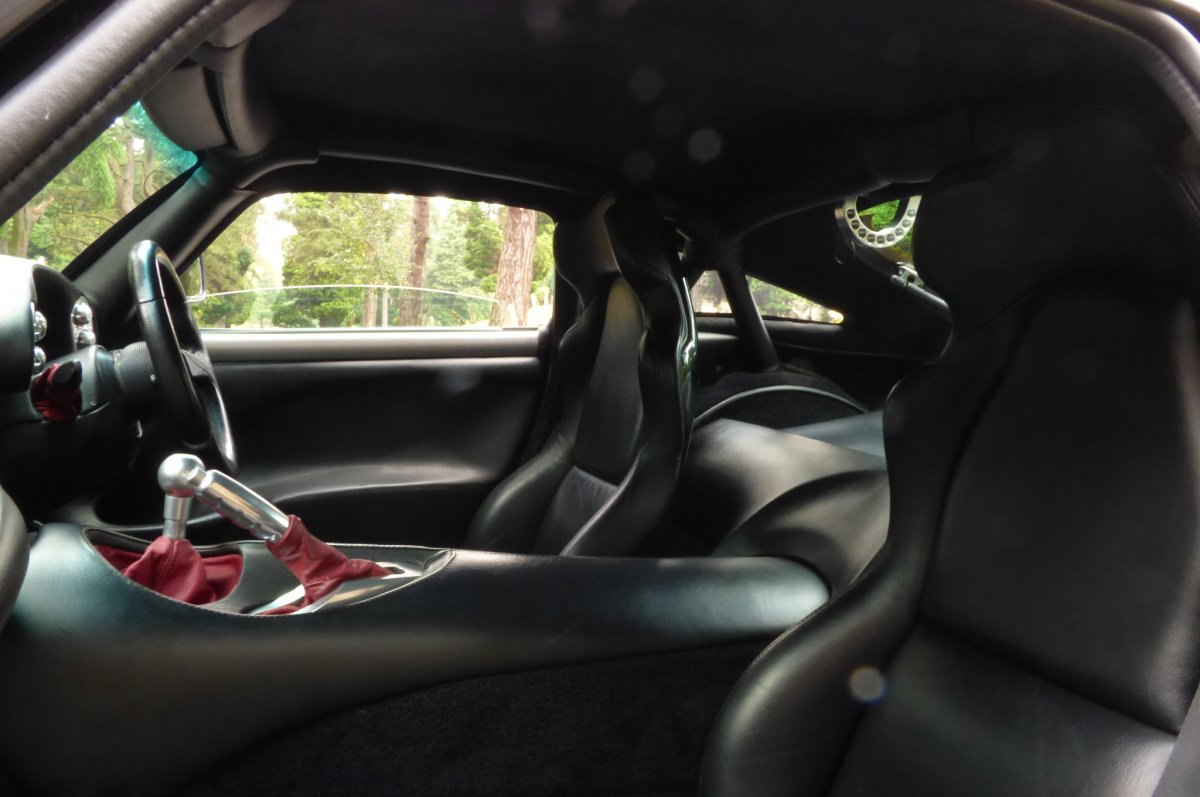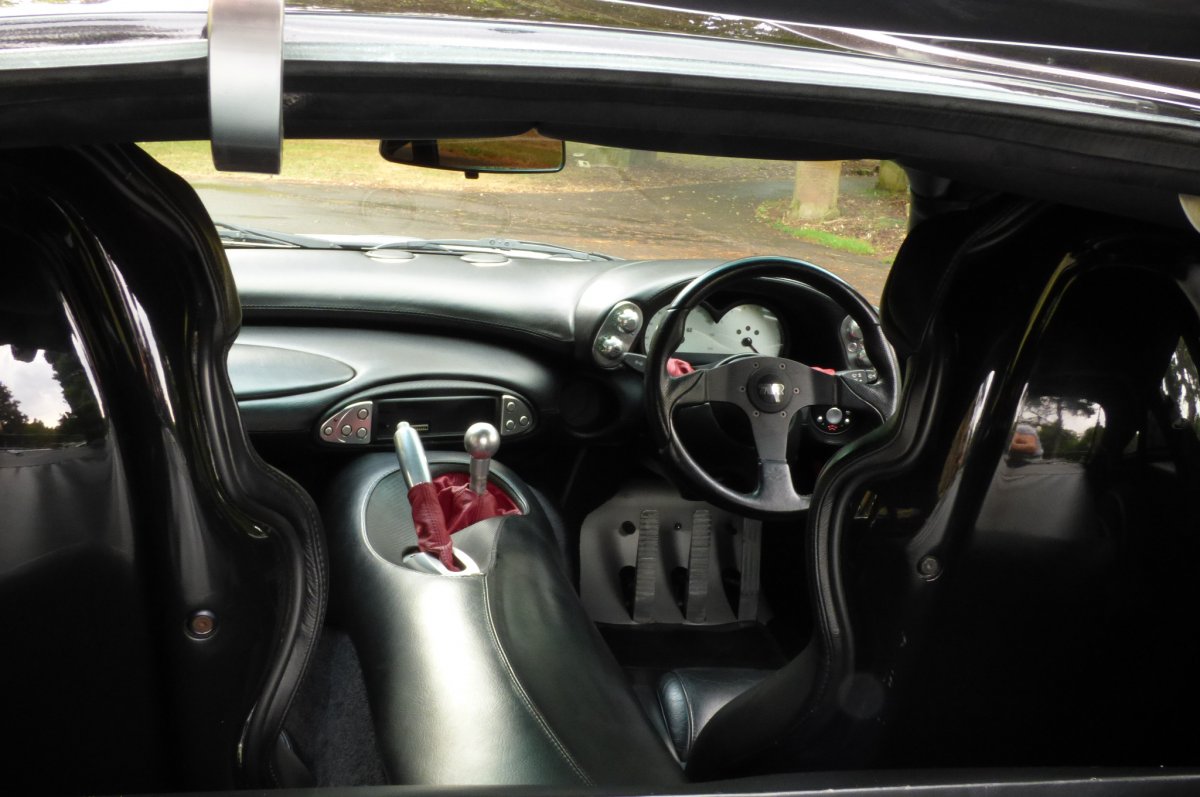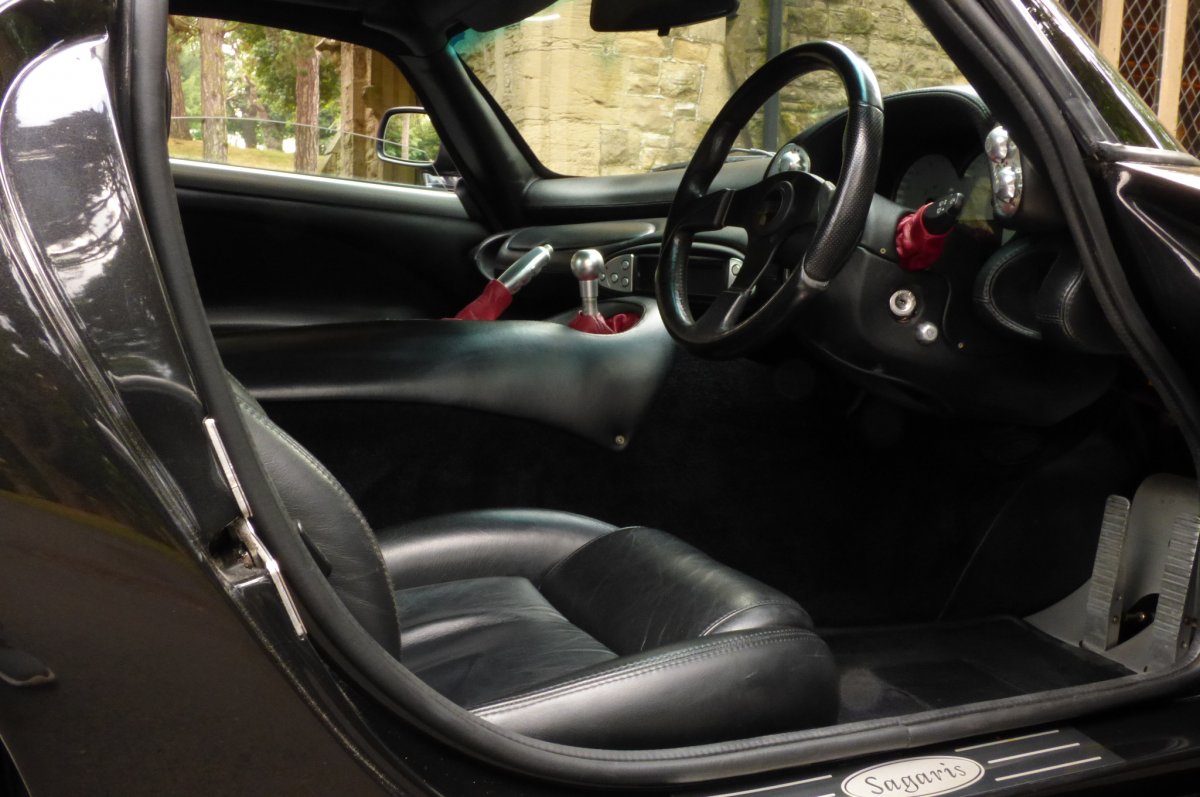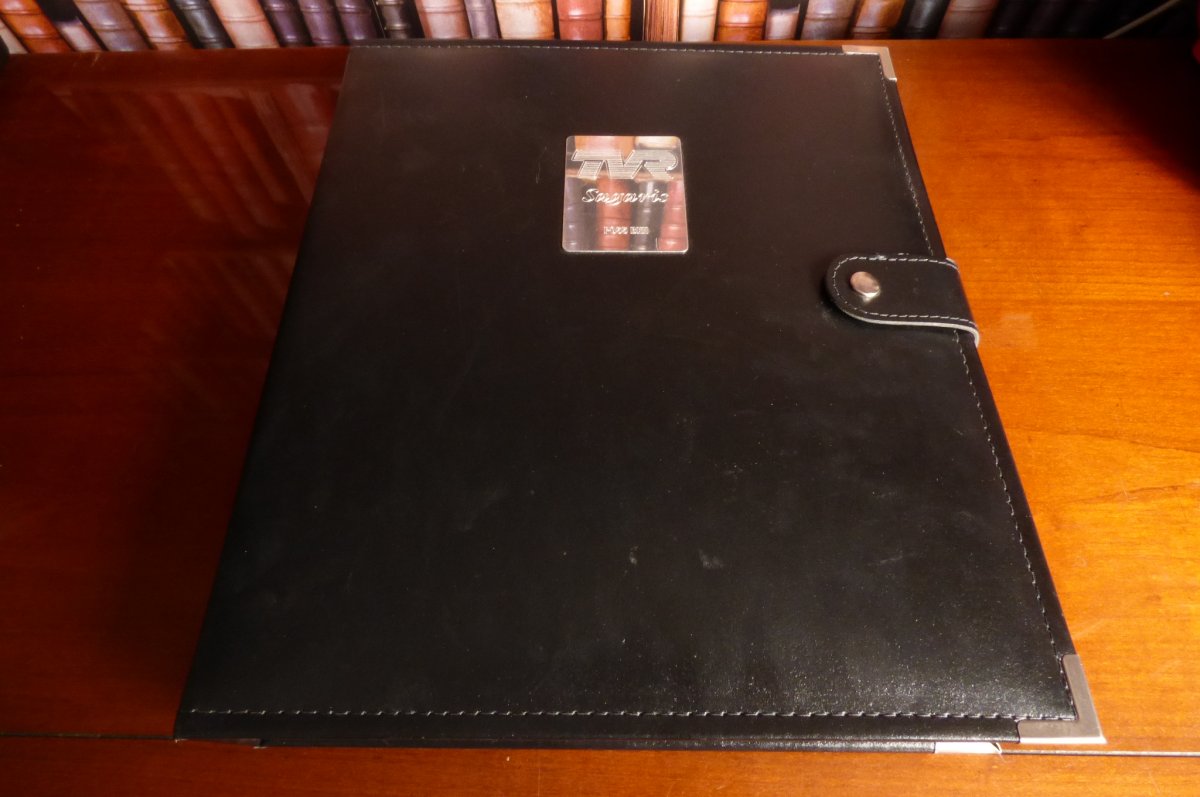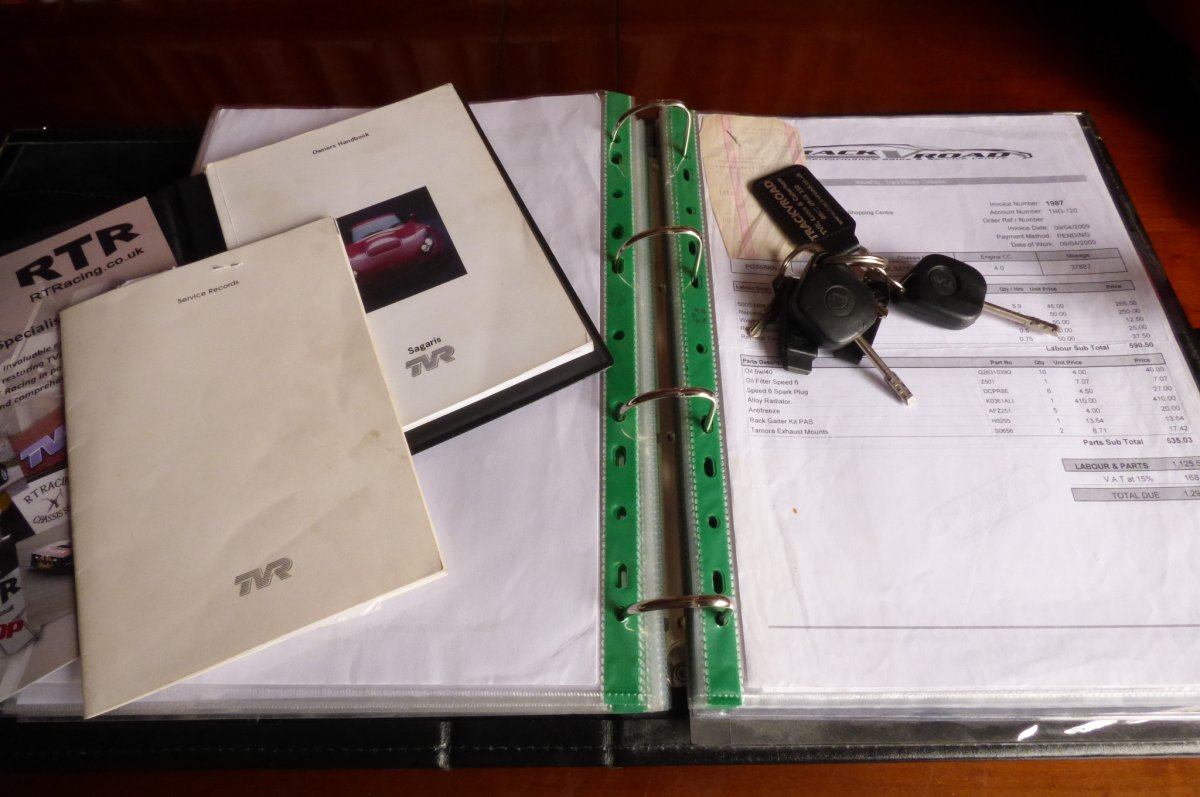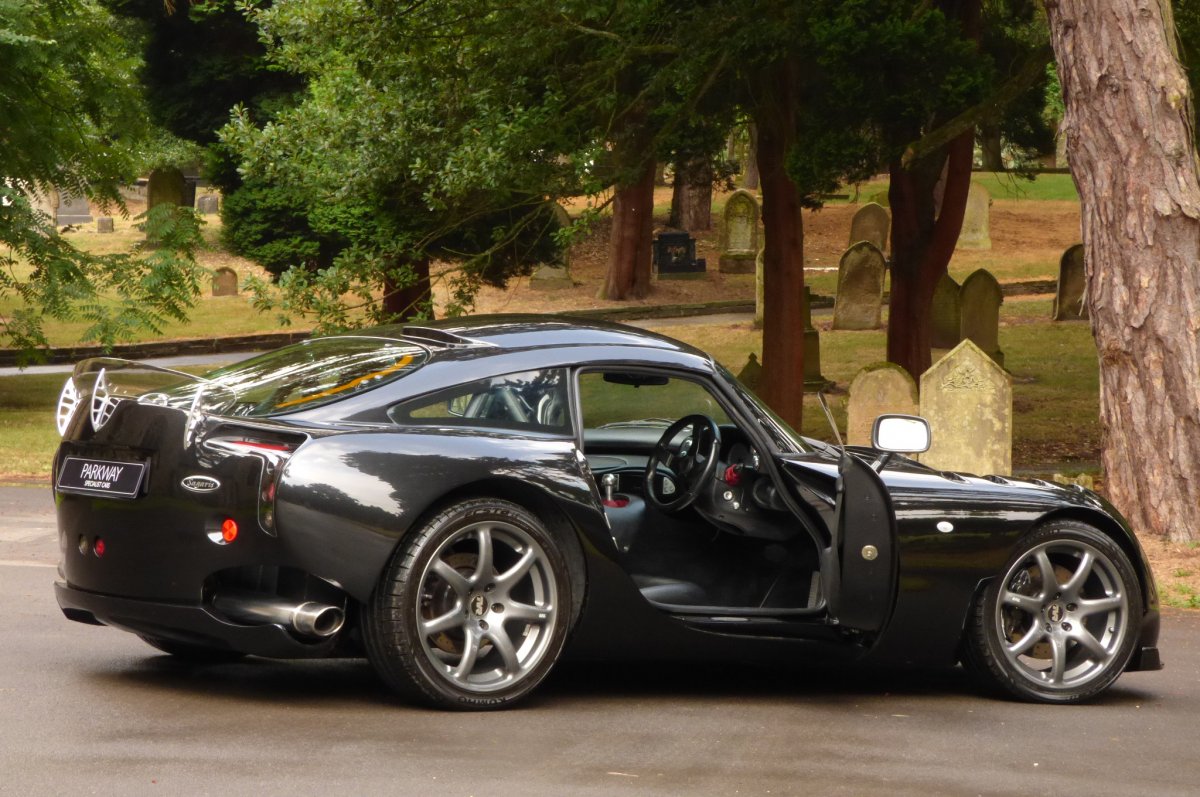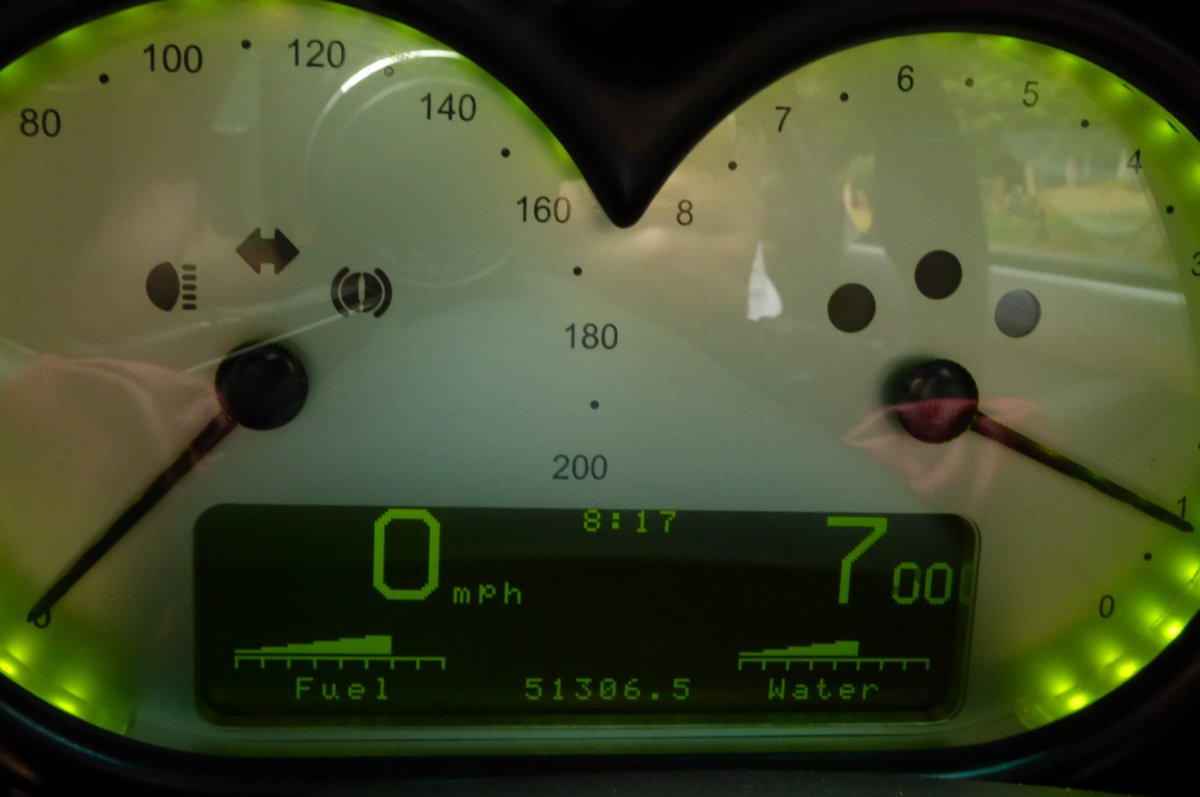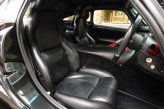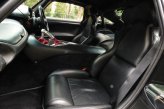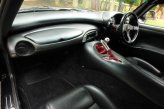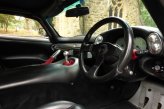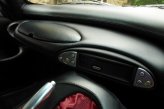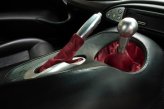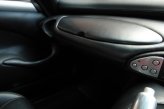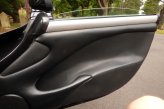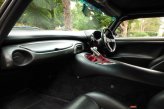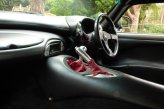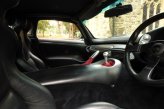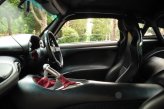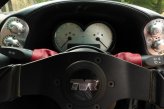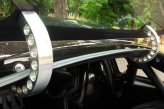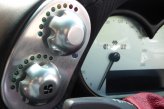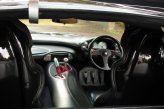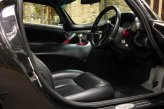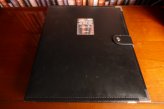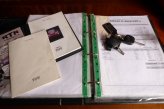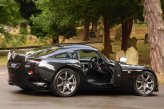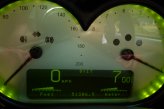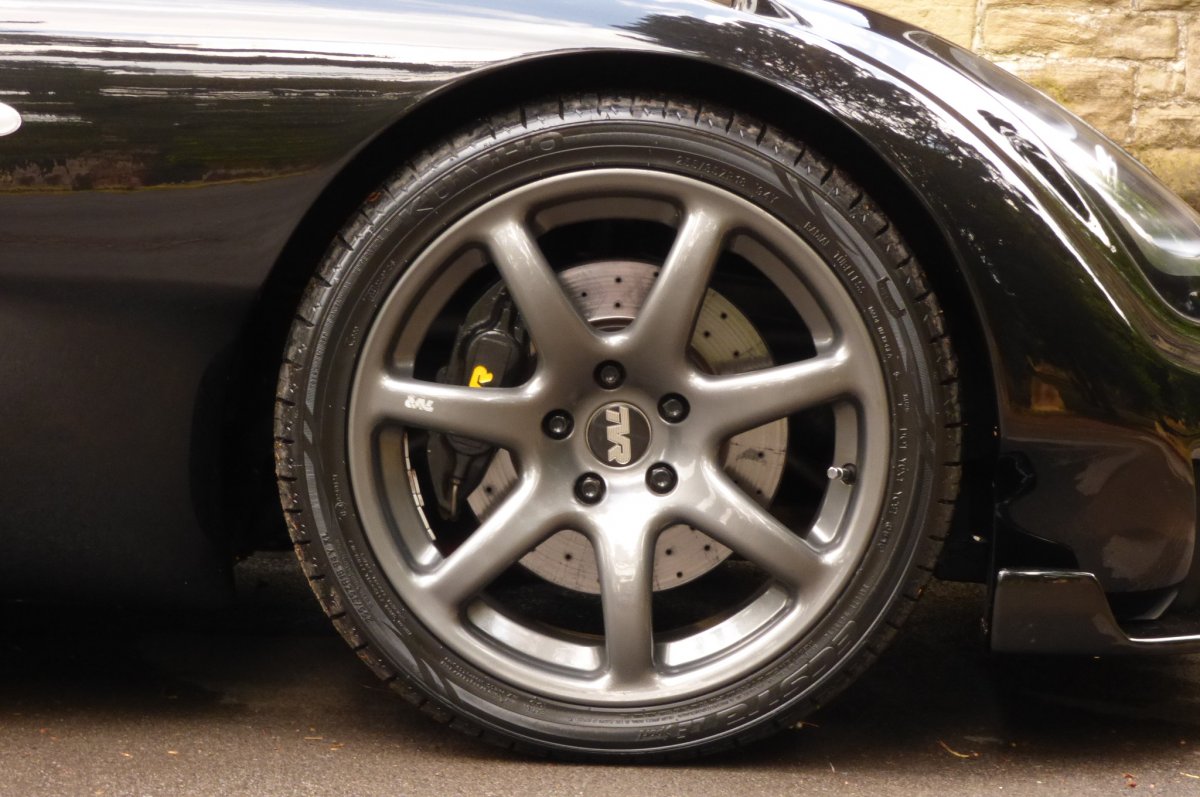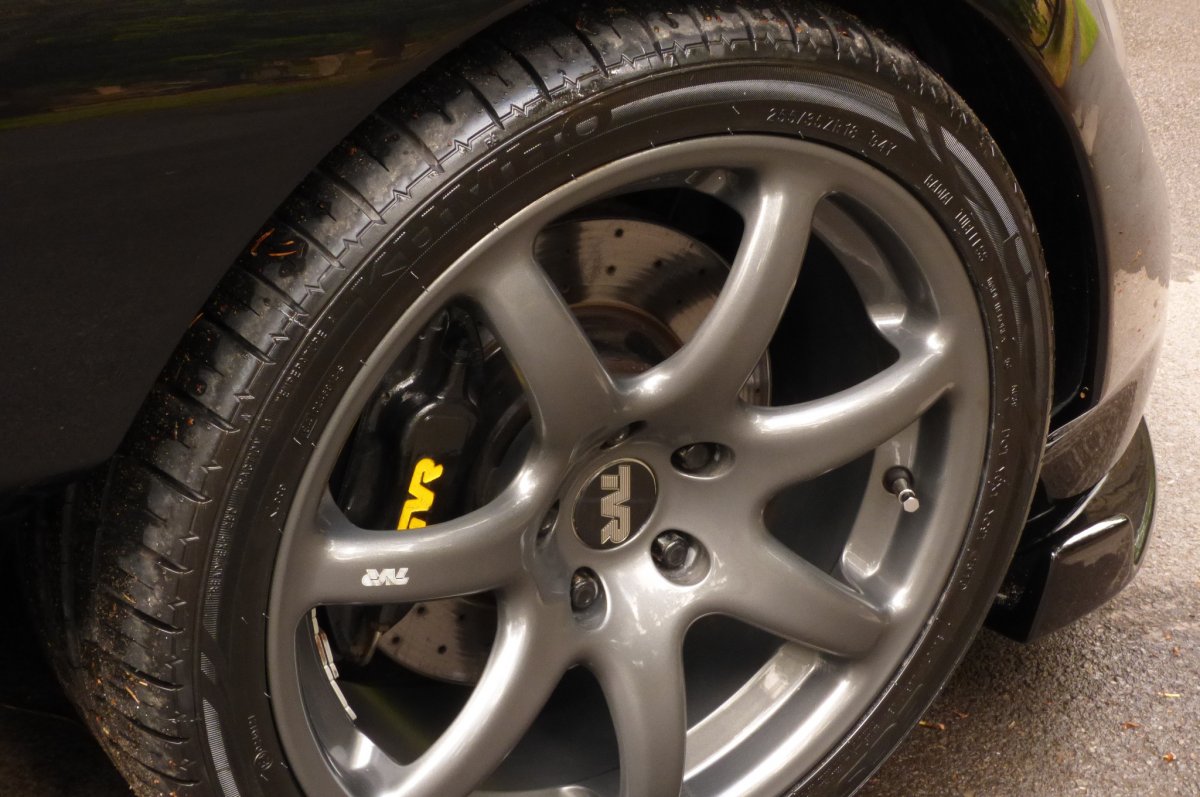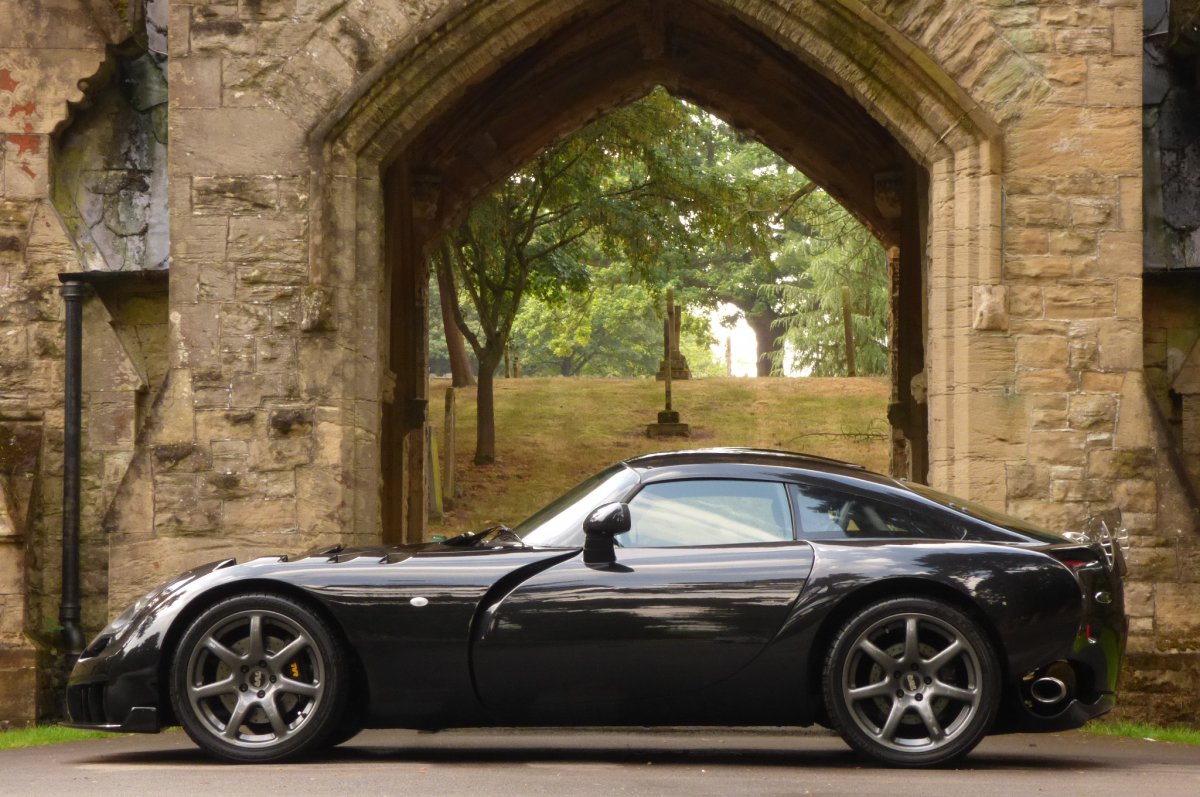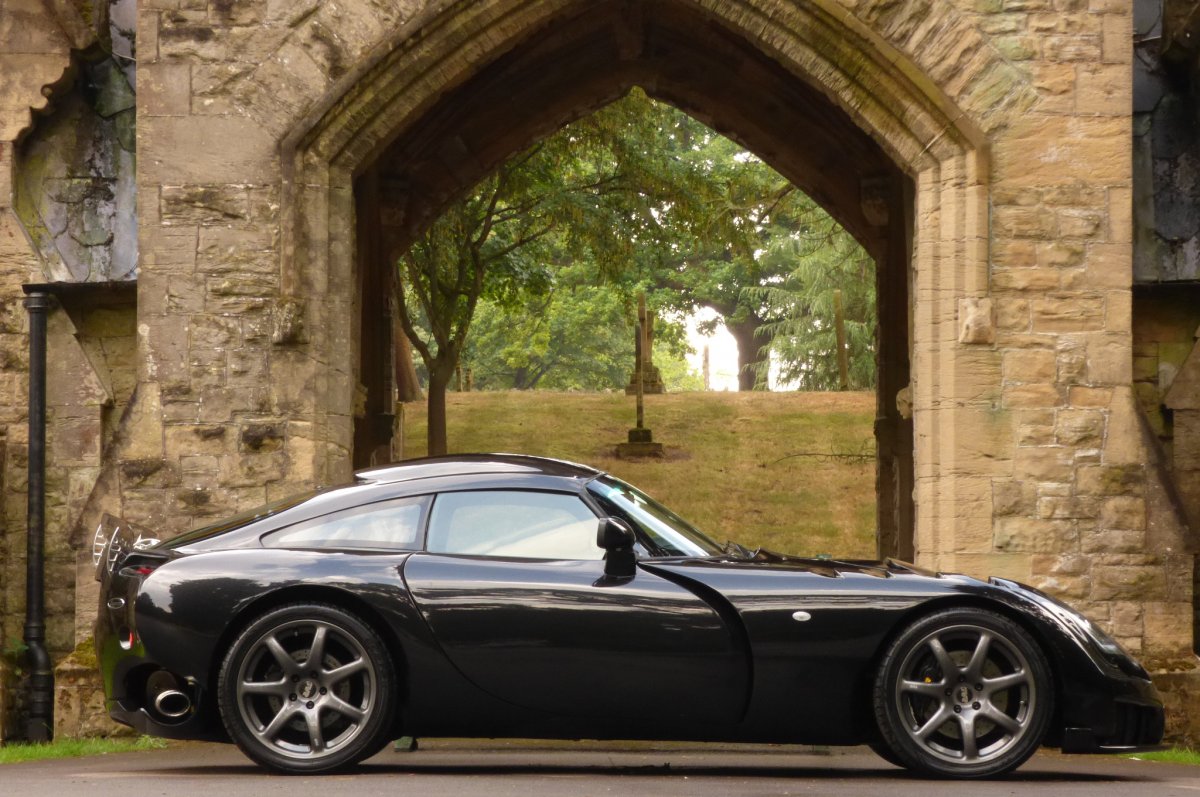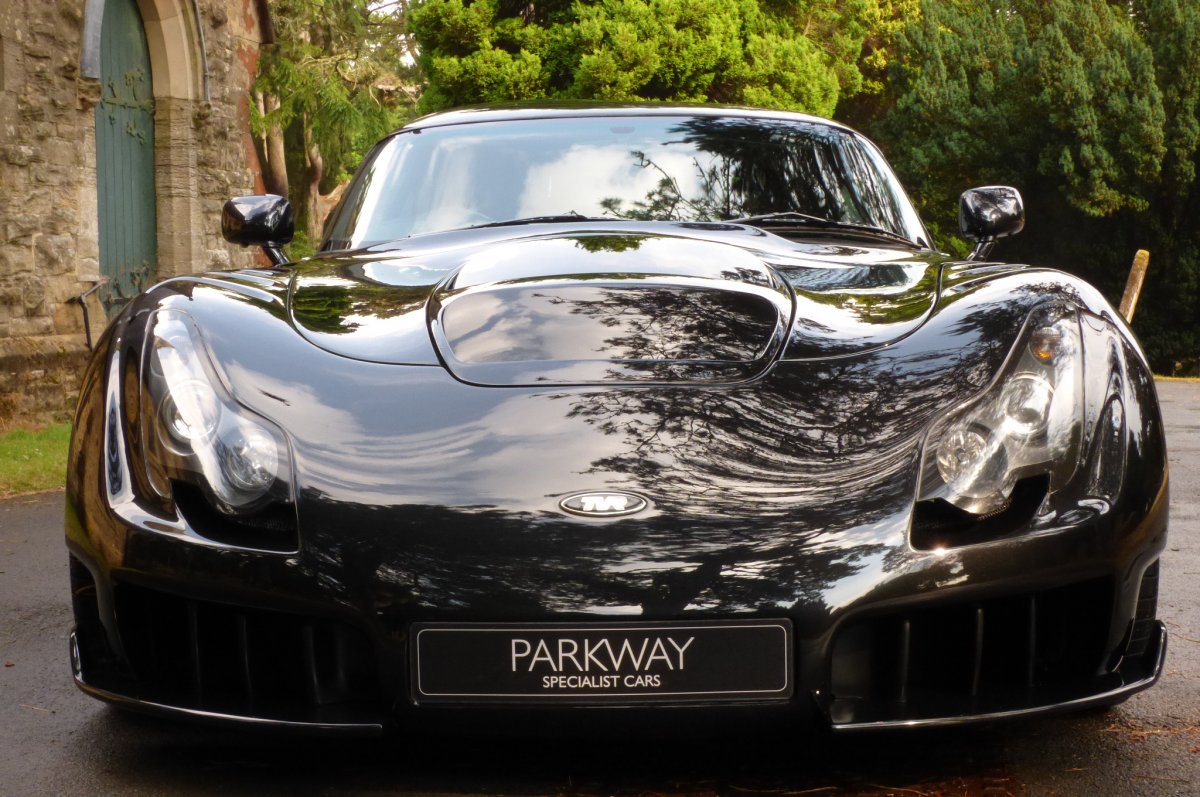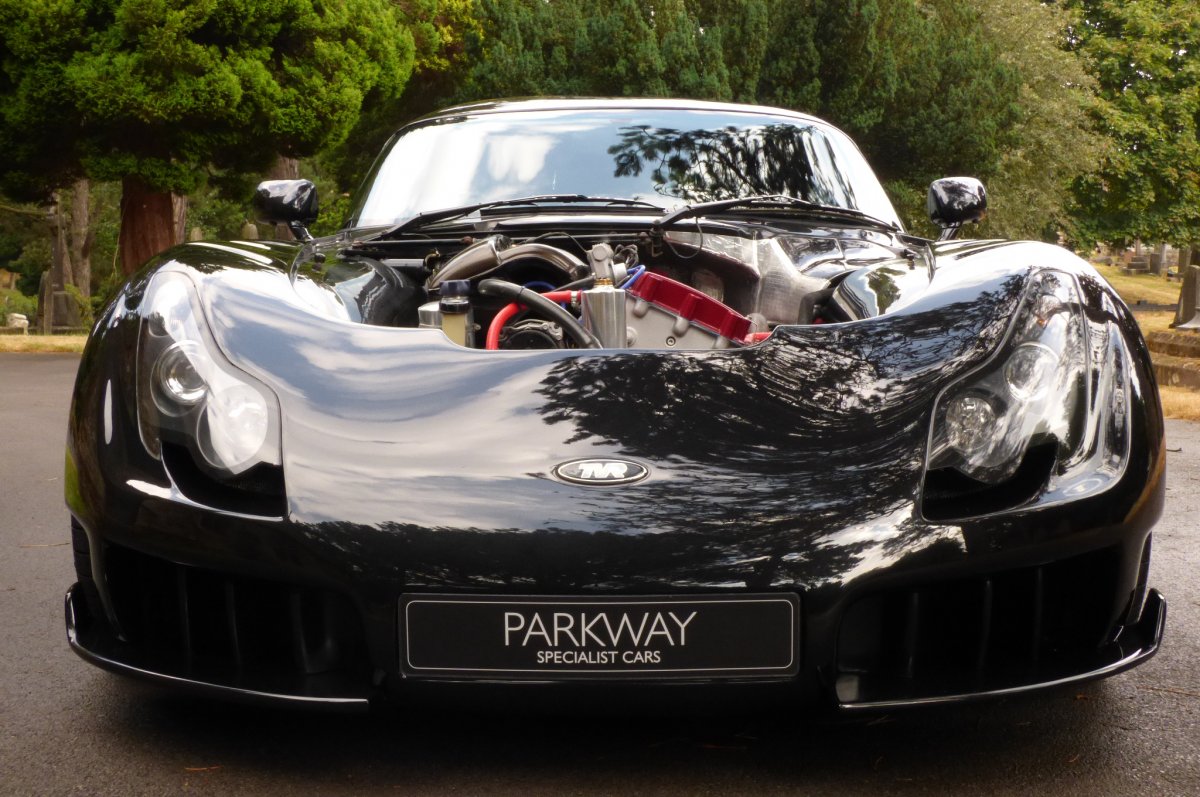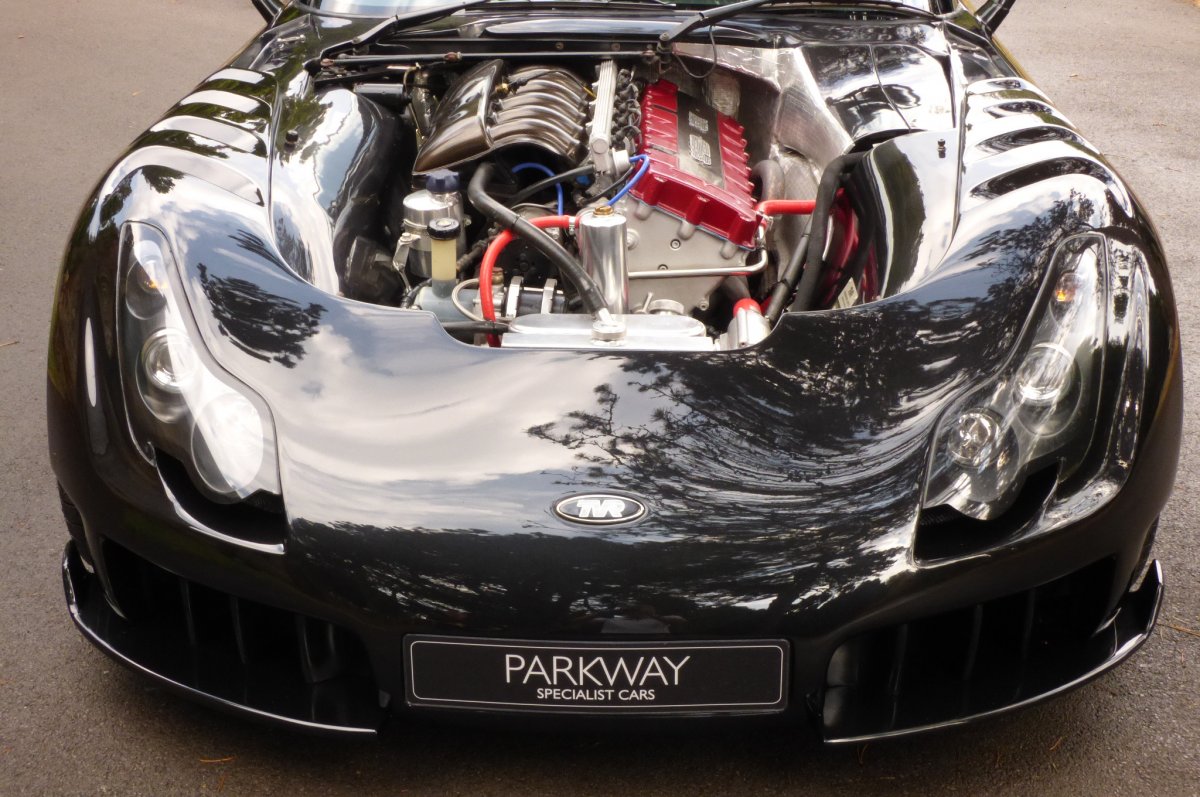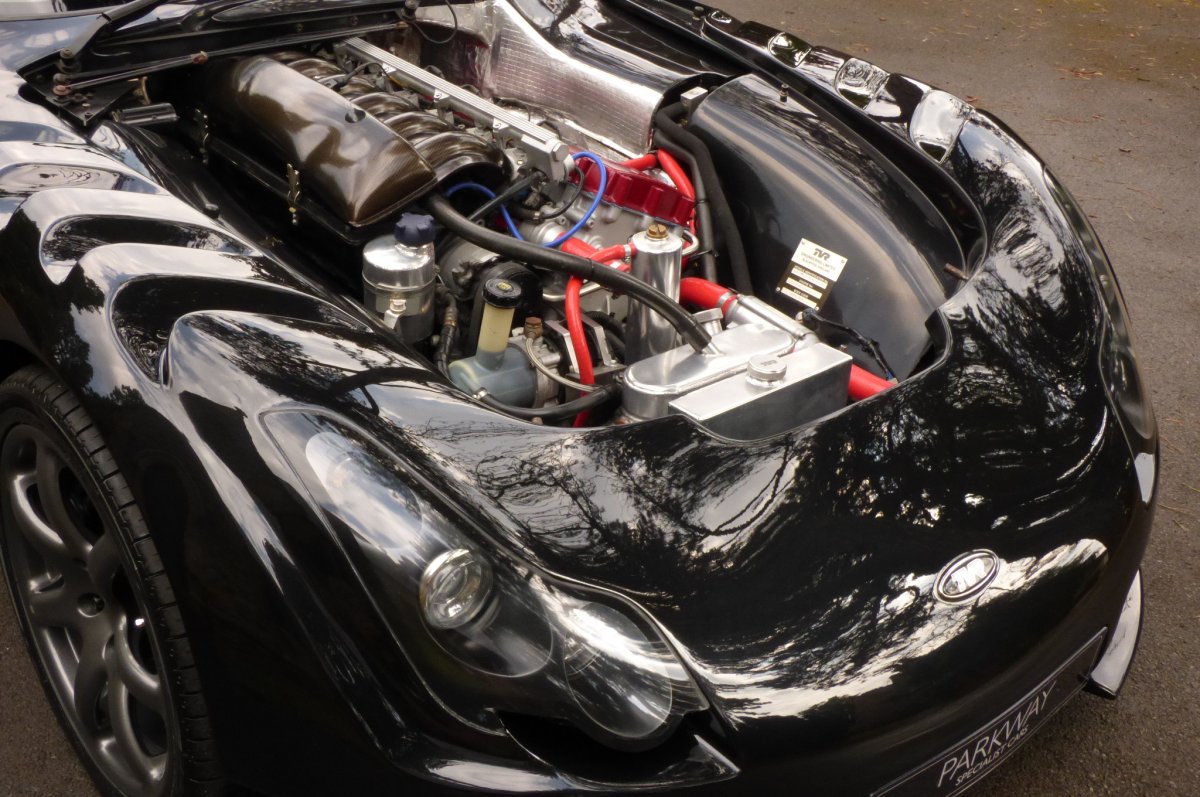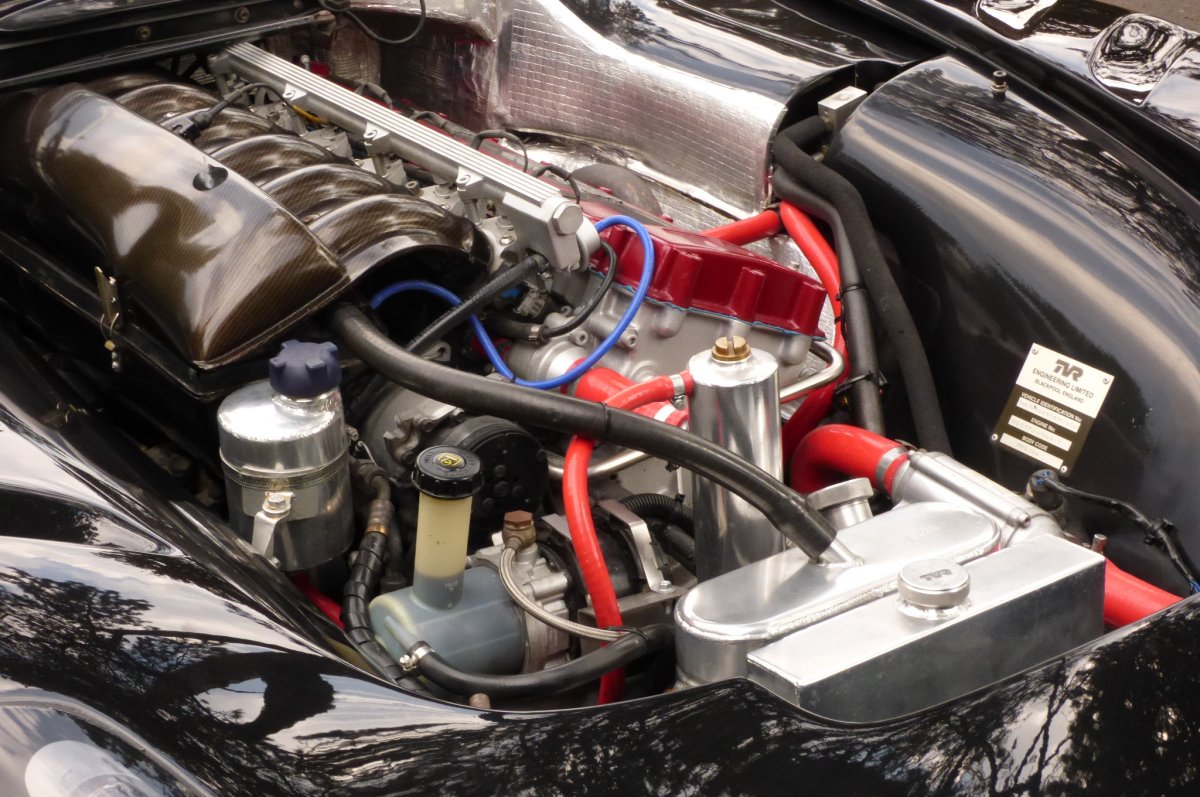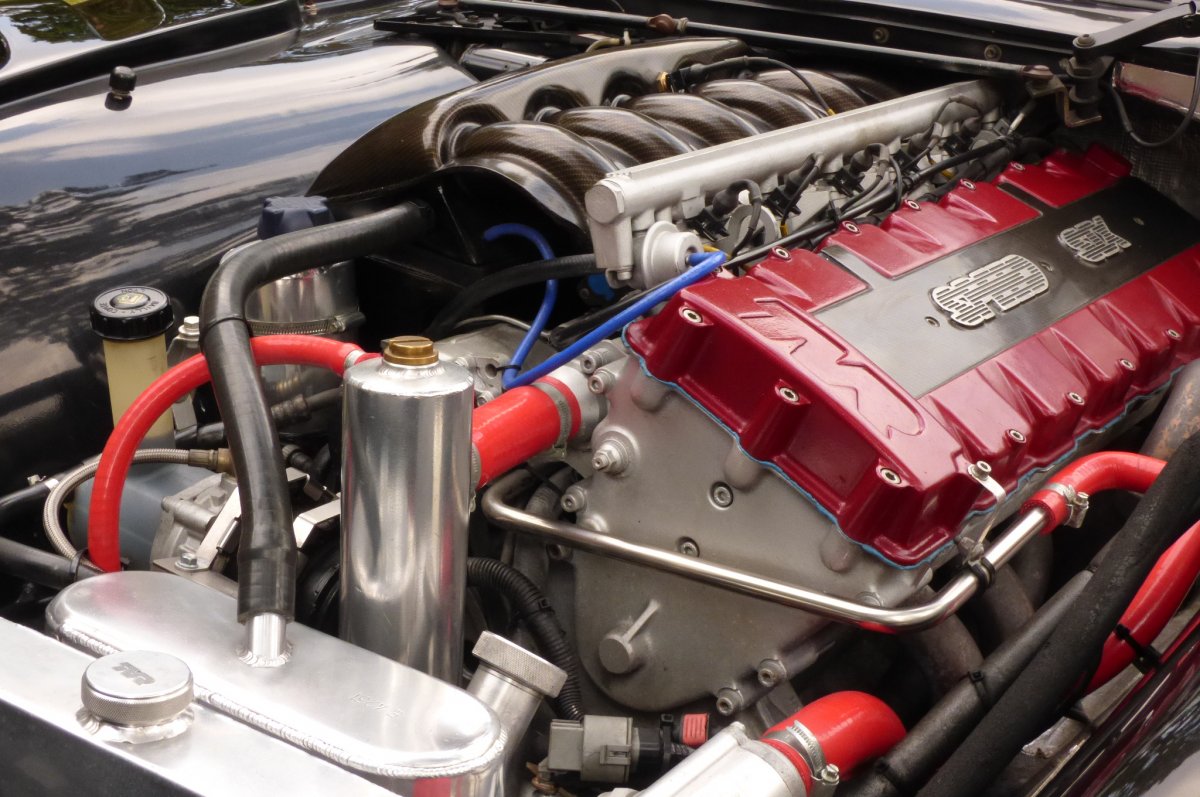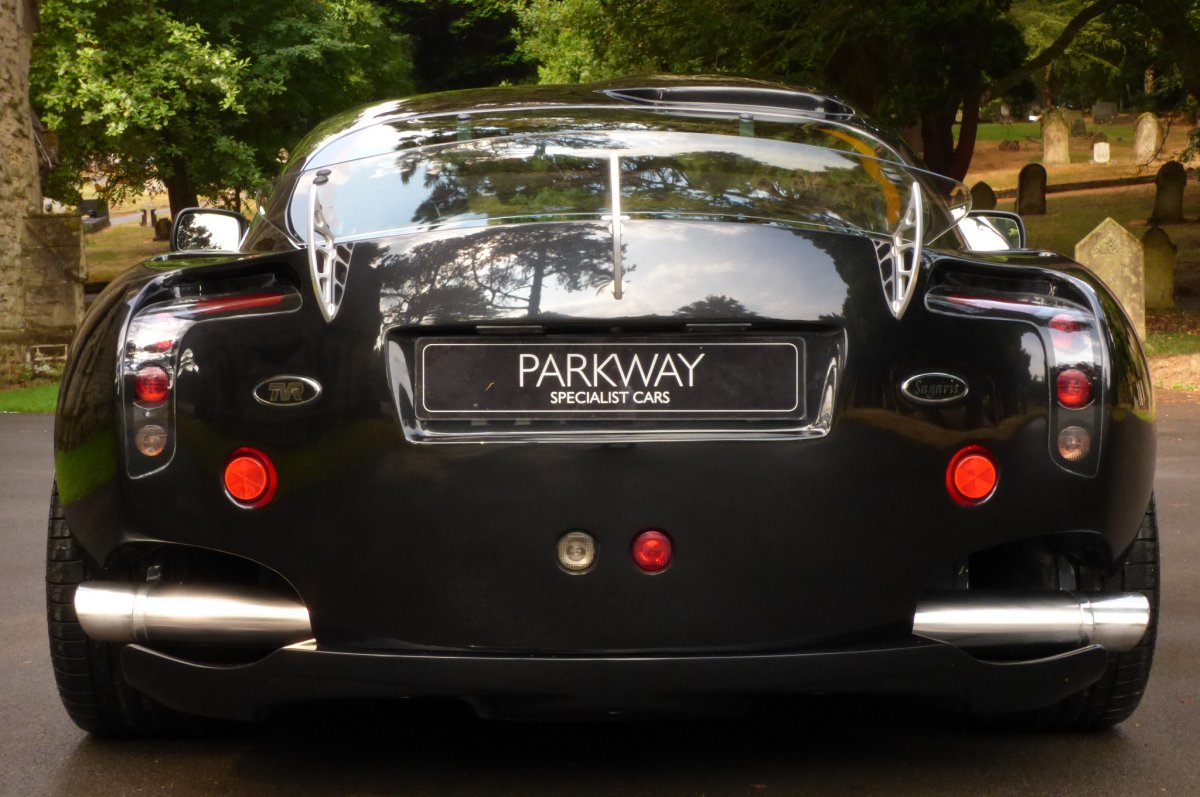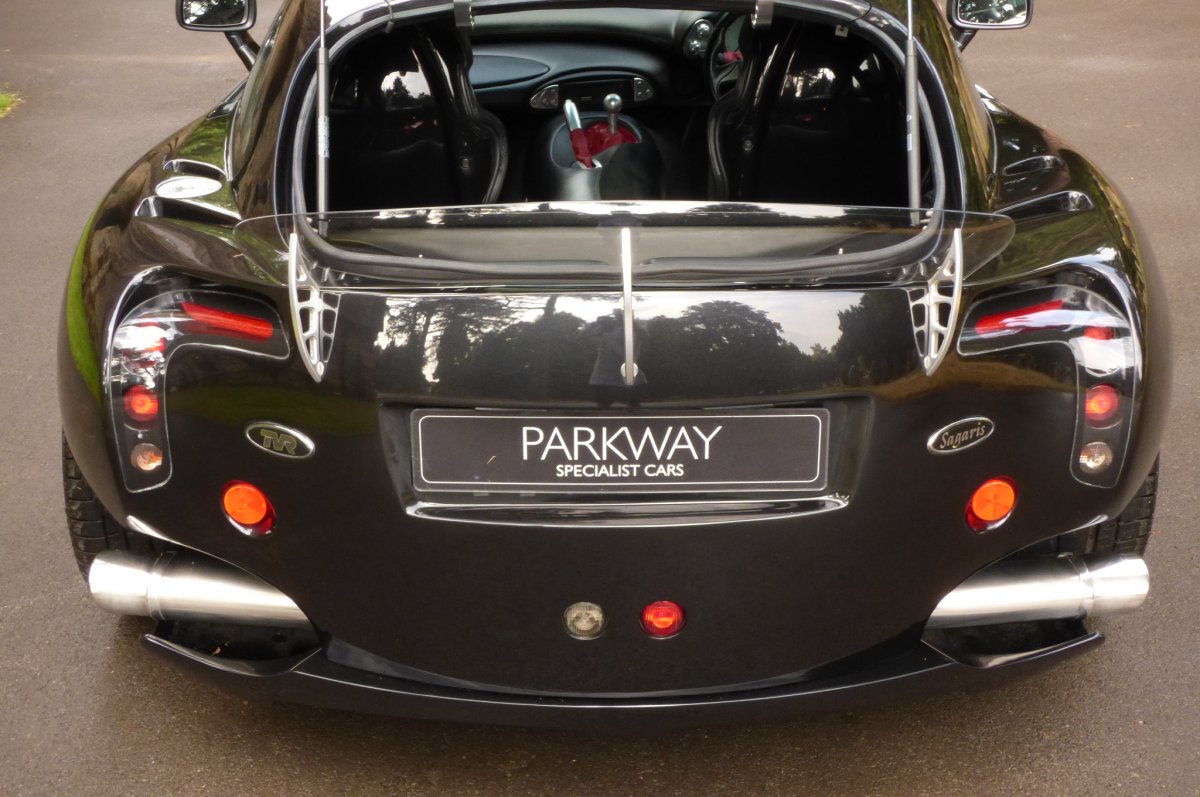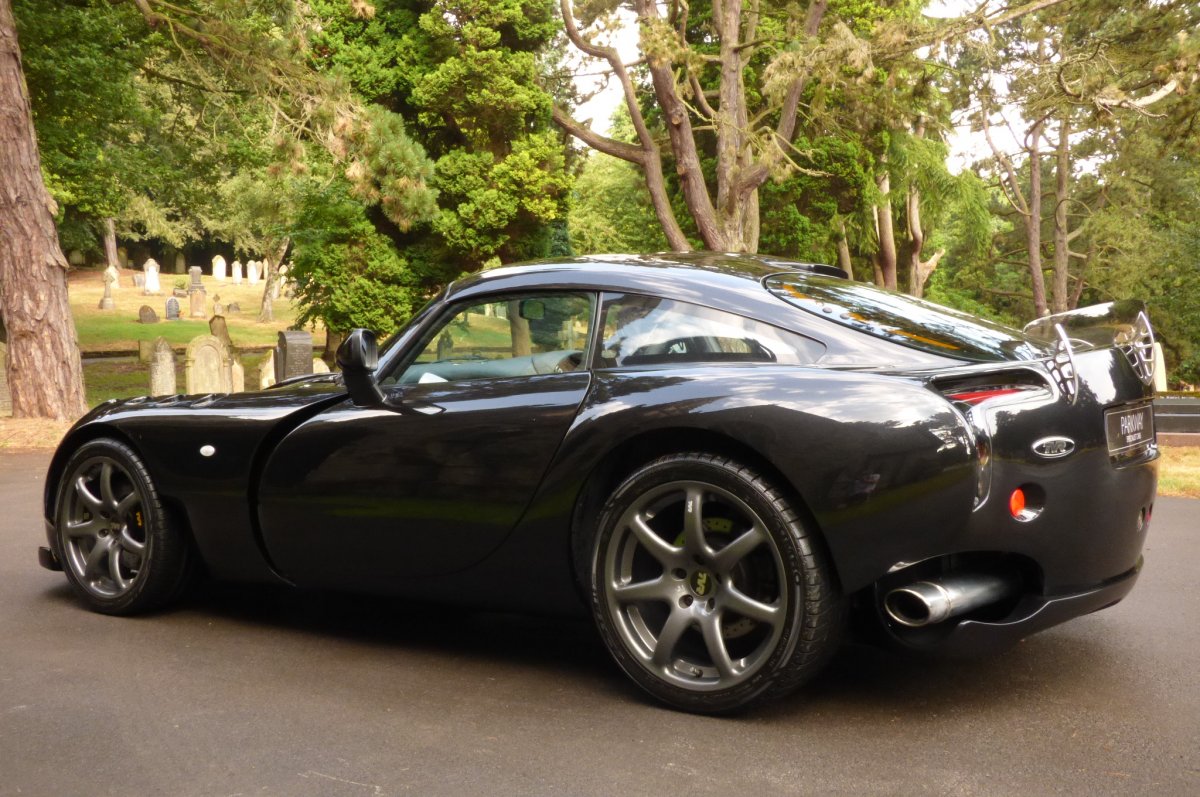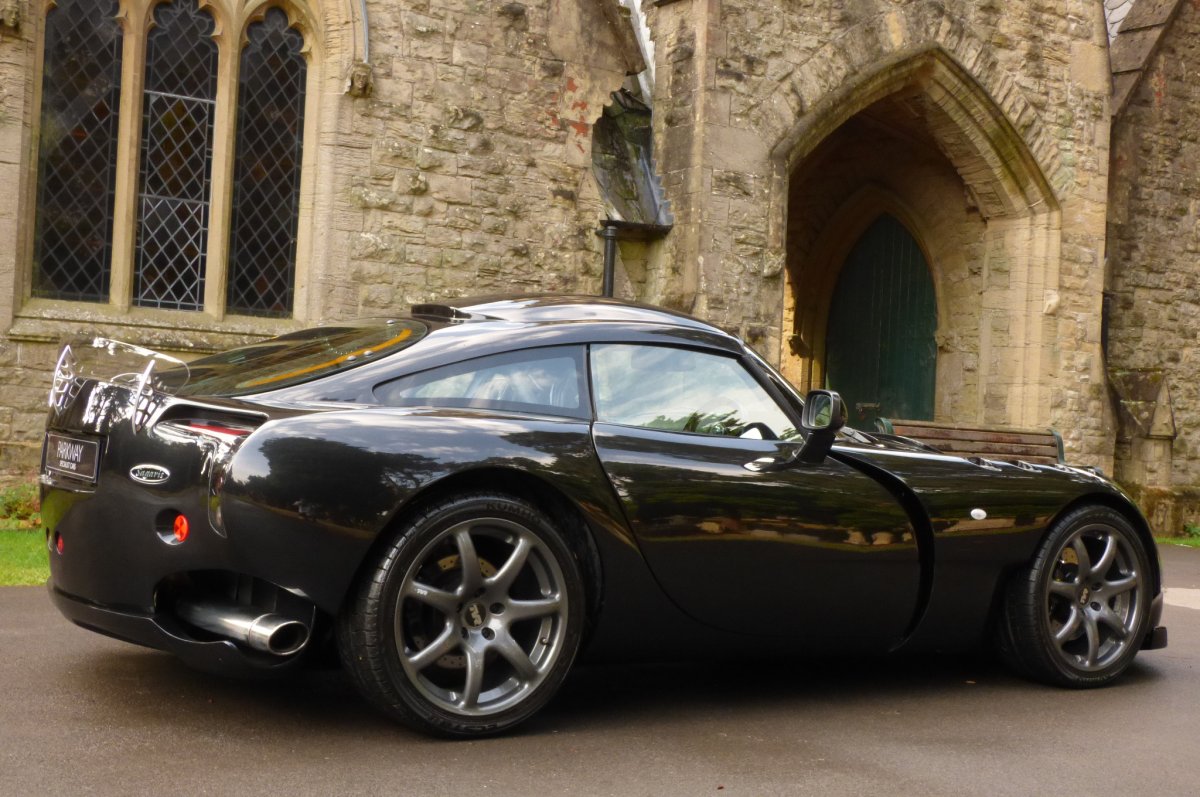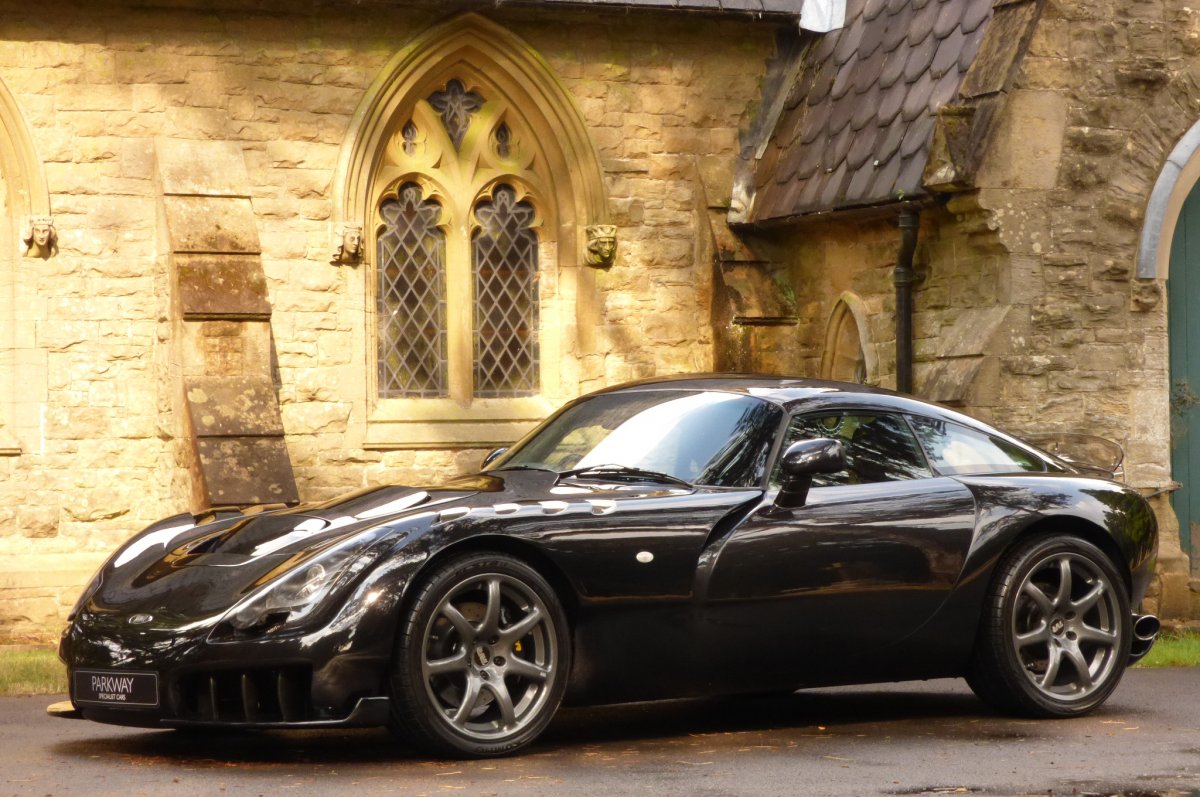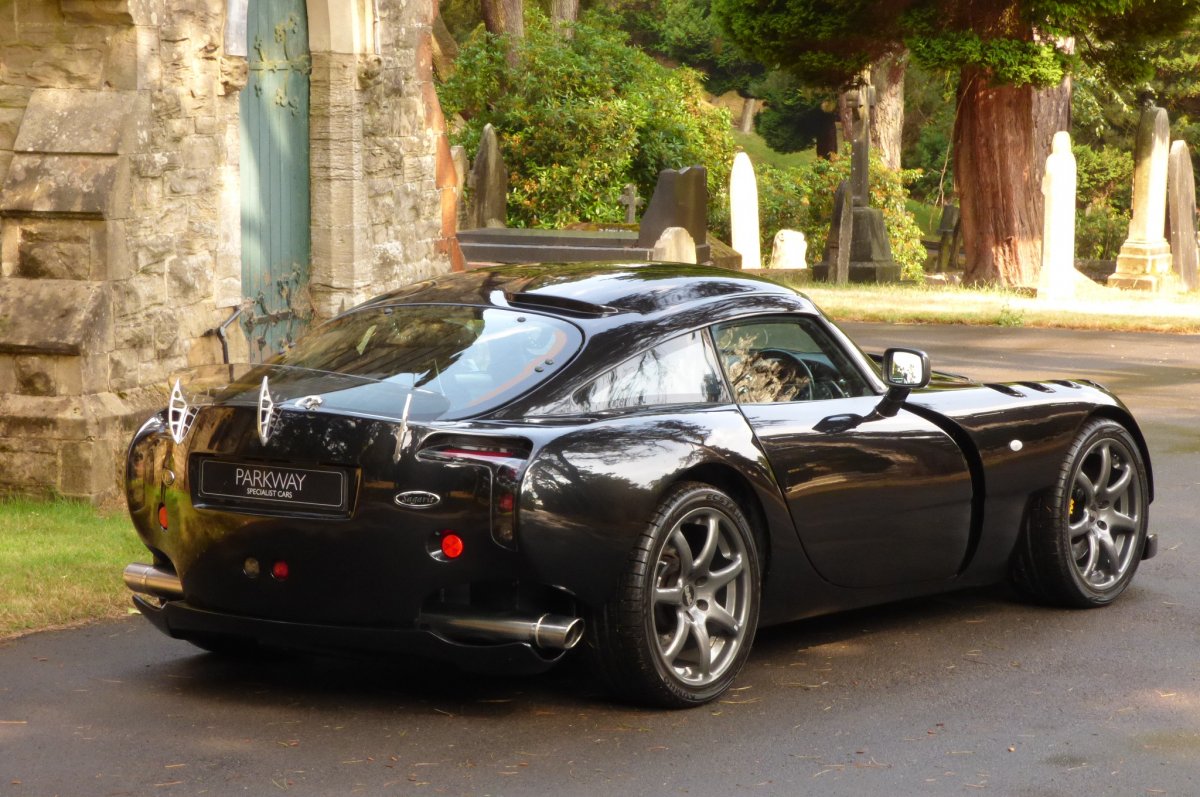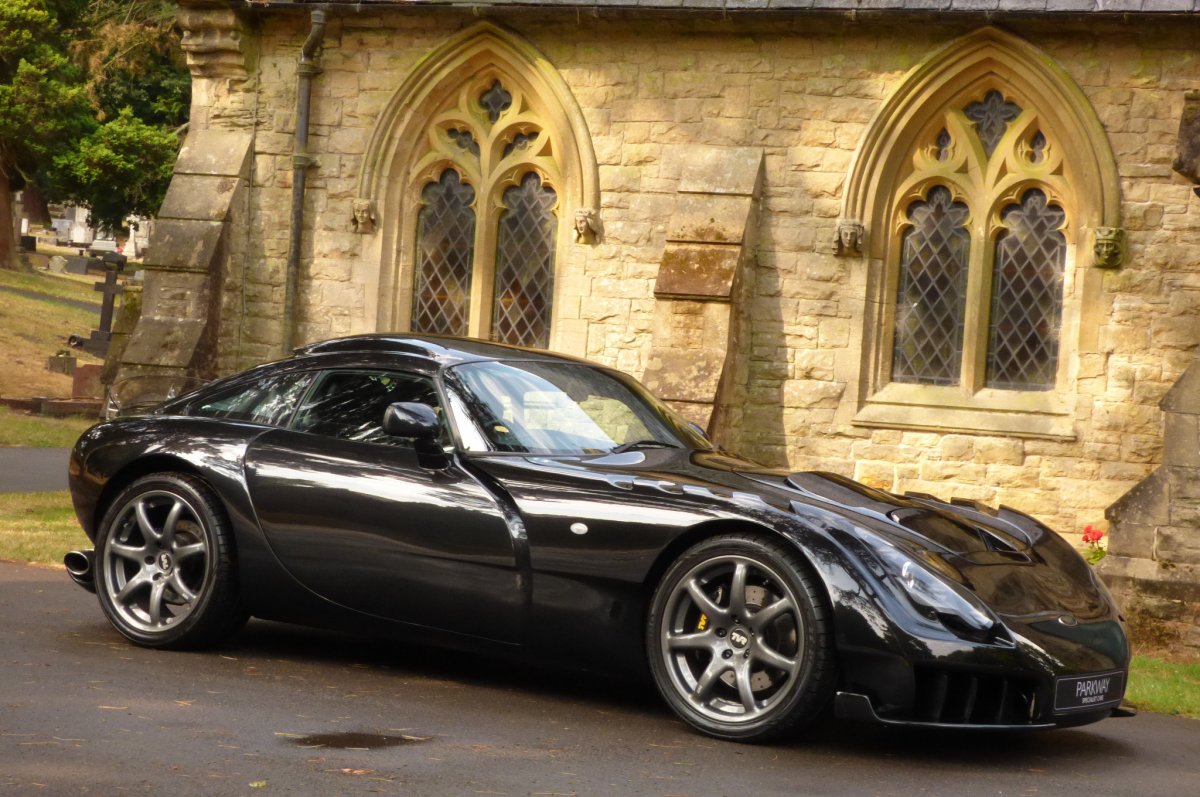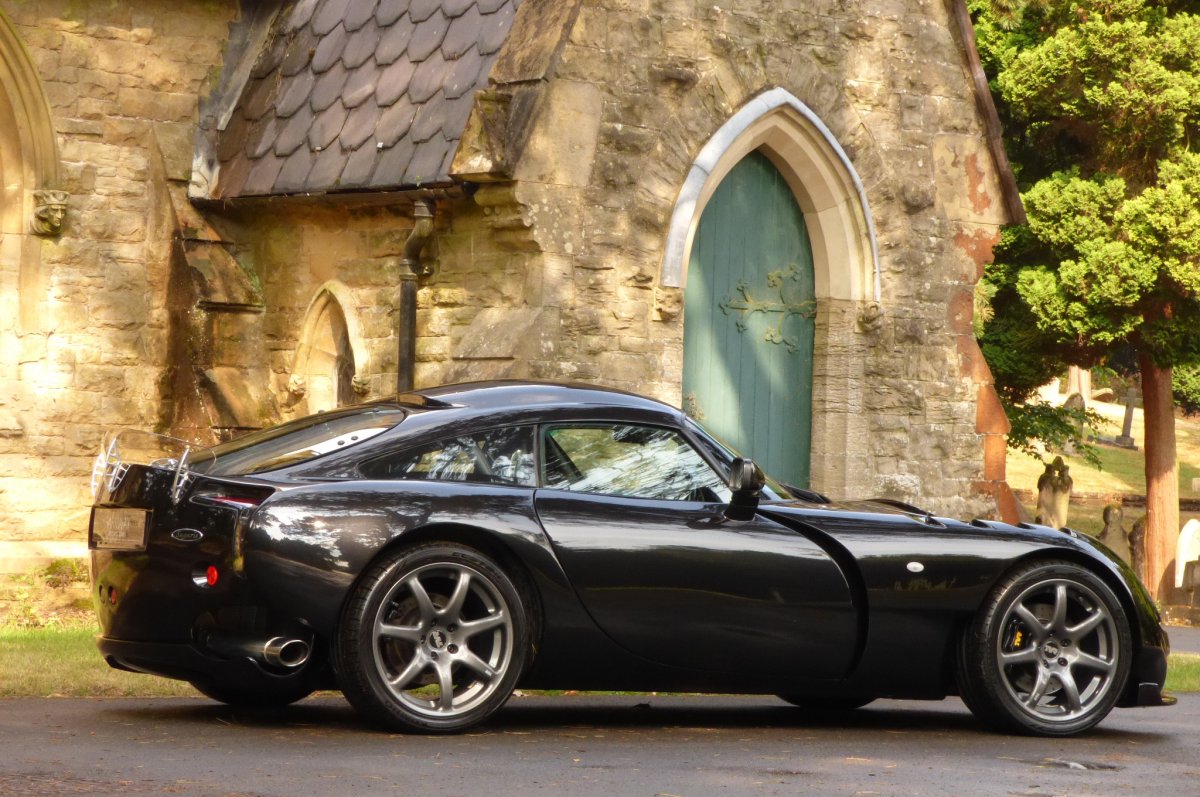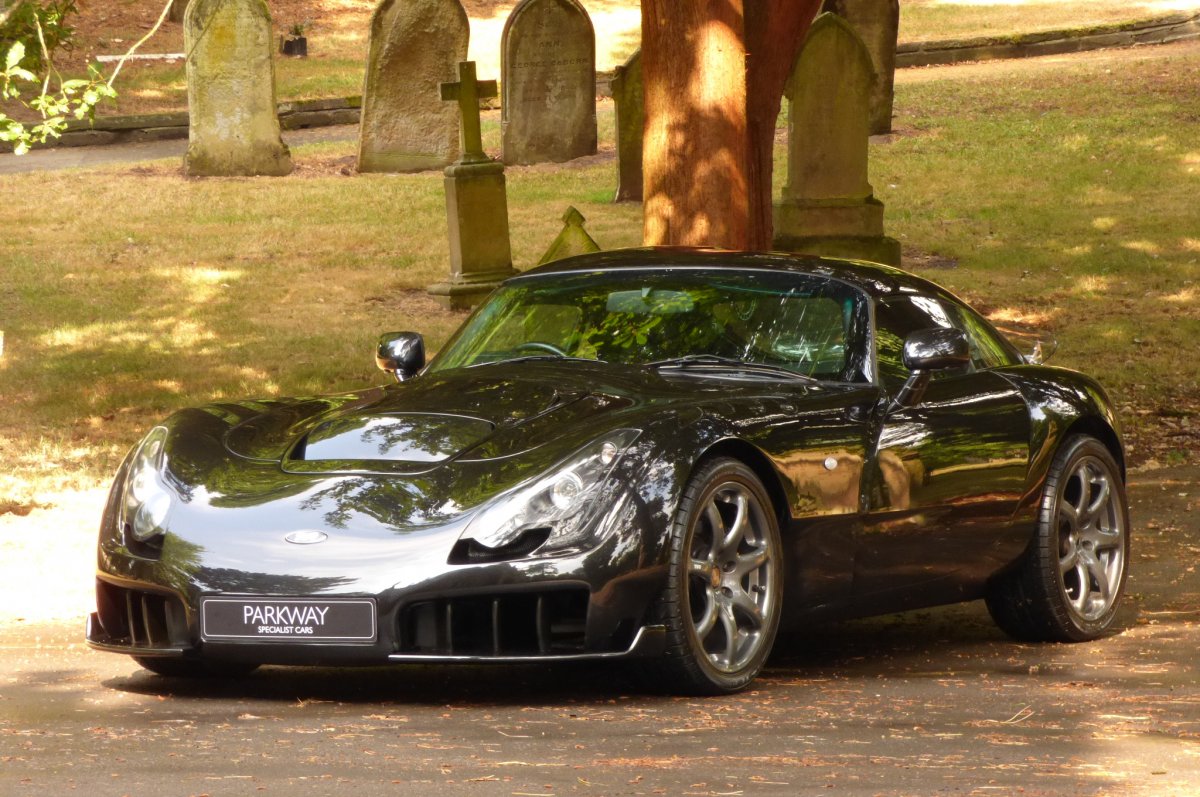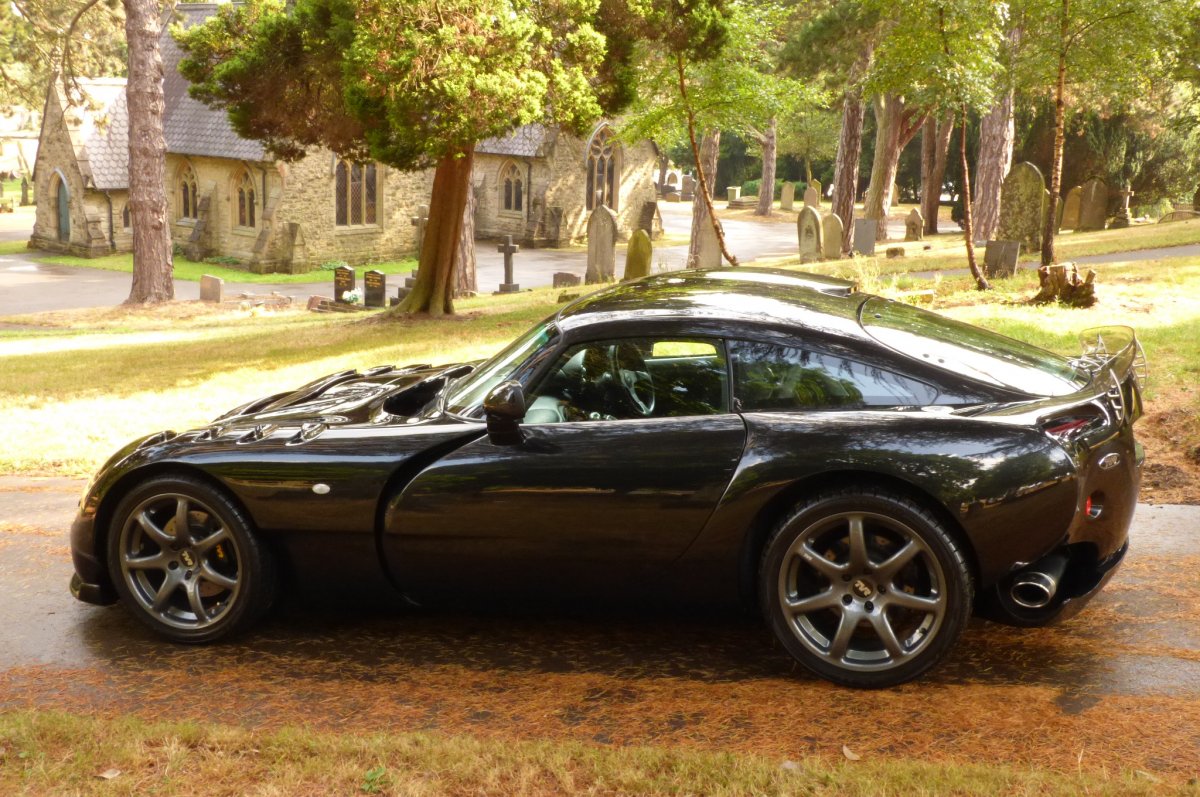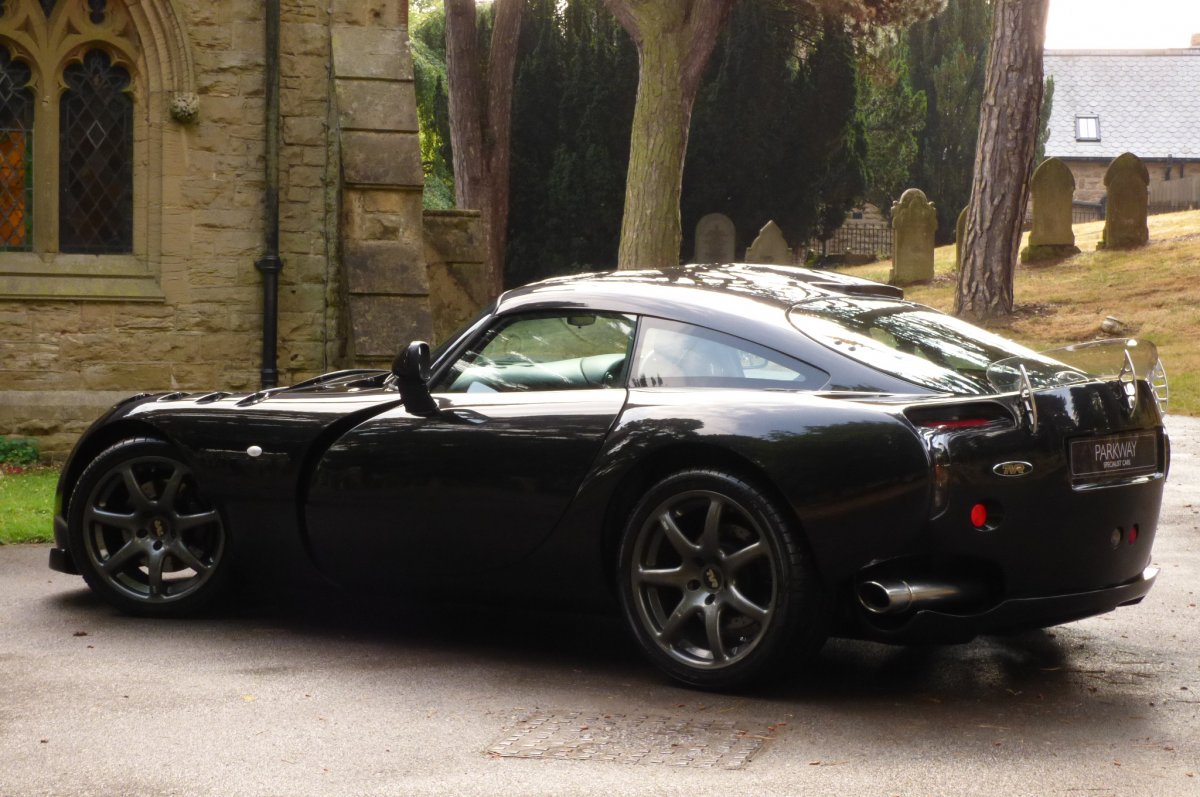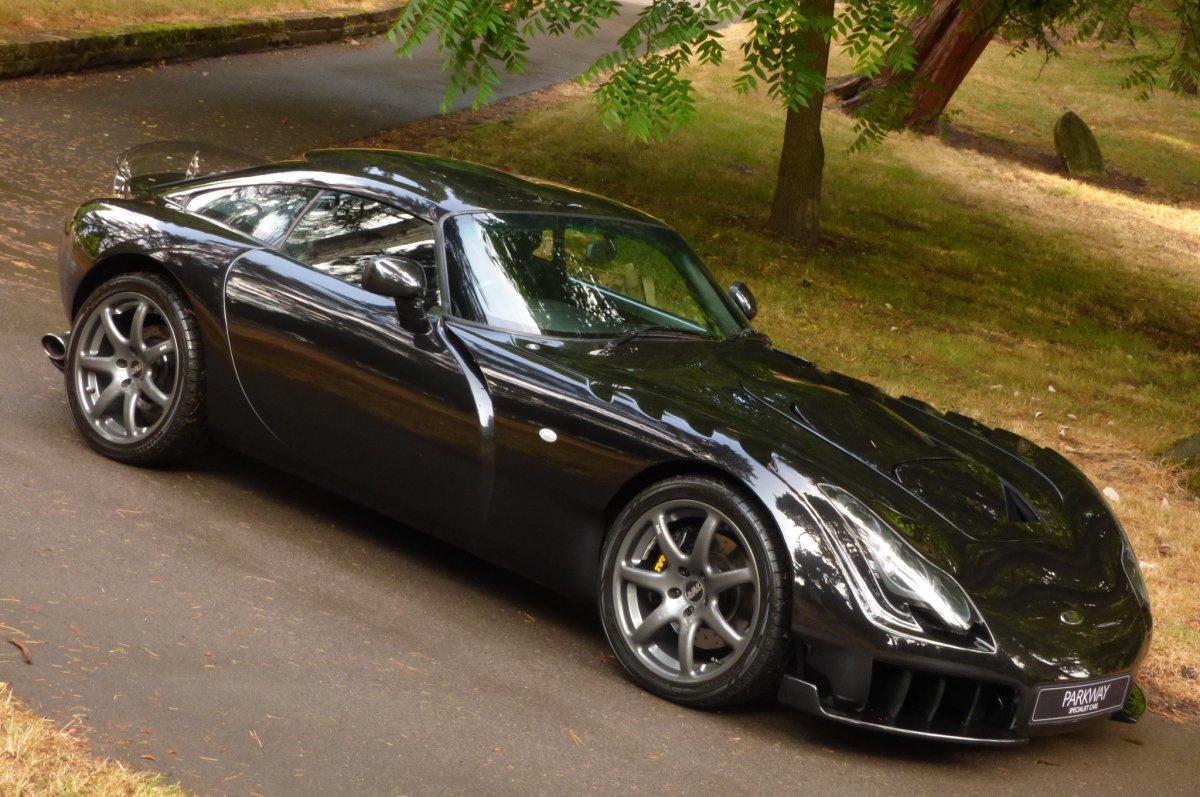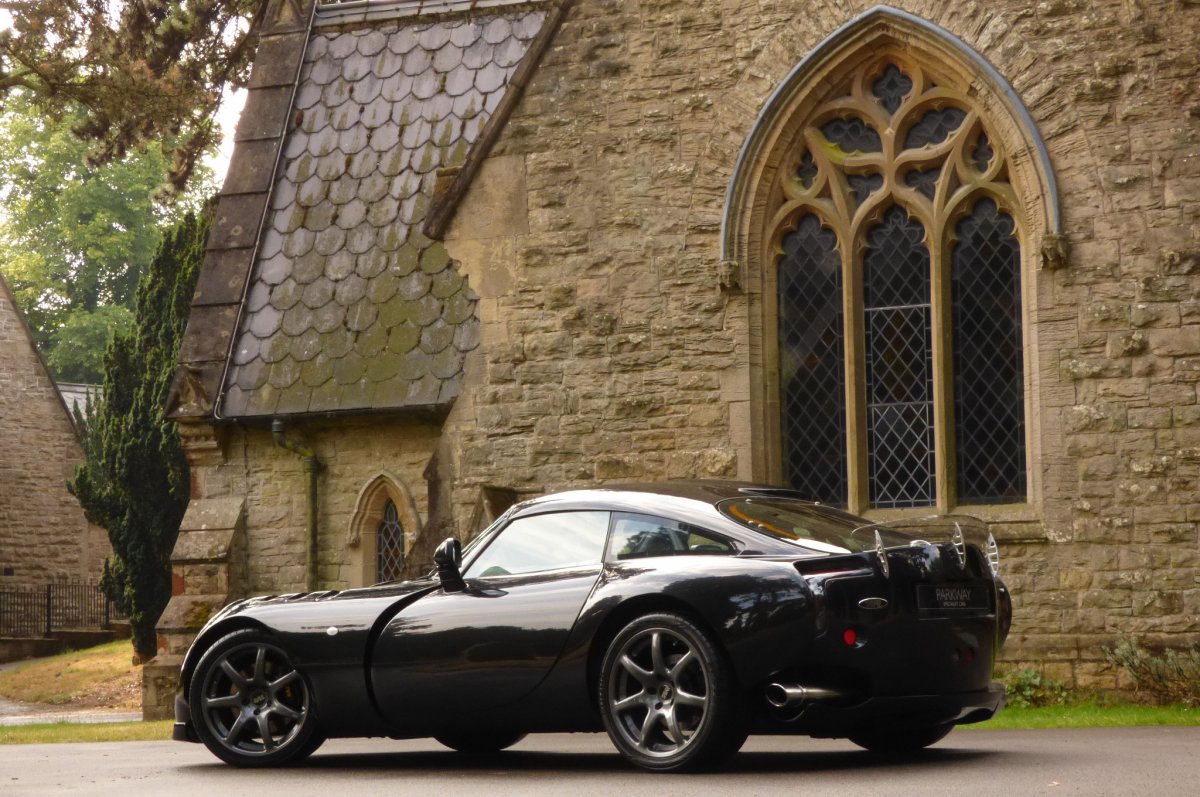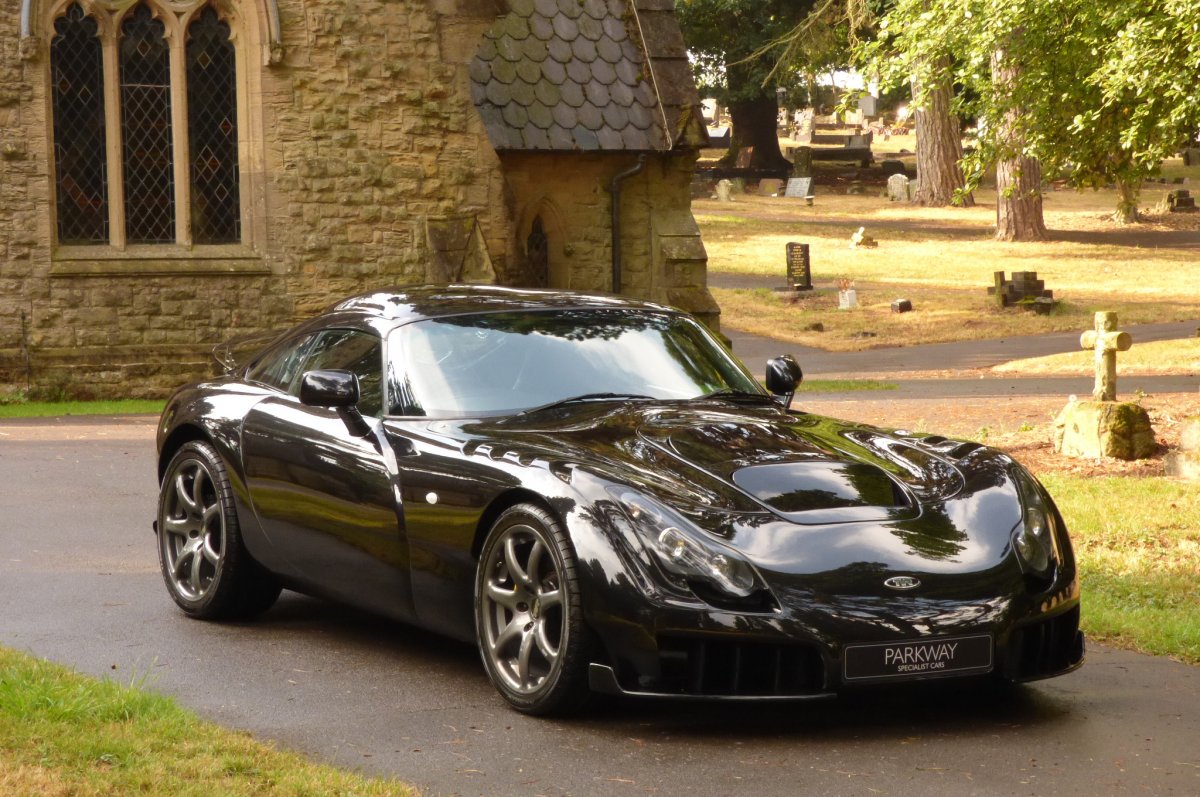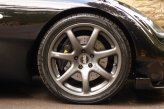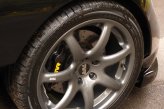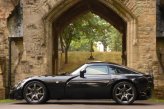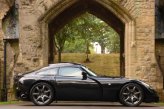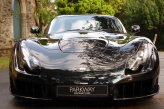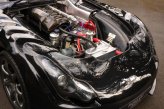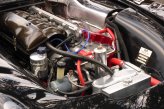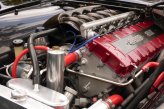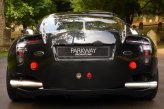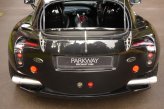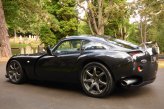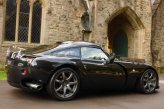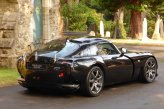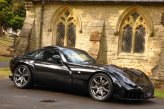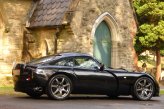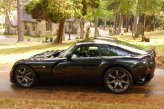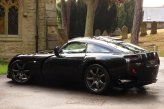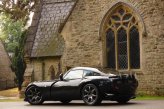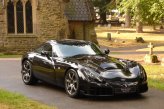The Blackpool based TVR Motor Company first offered the Sagaris to the motoring press at the 2003 MPH03 Auto Show and was further showcased a year later in 2004 at the NEC Birmingham Motor Show, with order books fully open and the first small number of vehicles to become available to the lucky few in 2005. even though the factory never documented the exact total build of cars, there are reports that only a mere 211 units had been produced and sold between 2005 to 2006 and if we fast forward to 2018, the total number of vehicles still available to acquire are very few and far between, thus making this the ultimate British modern day classic Supercar. The radical design came from the perfect collaboration of factory designers Graham Browne & Lee Hodgetts, who both wanted this all new offering to be an endurance racer, yet sadly the Sagaris was to be one of the last models that would be produced from the Lancashire assembly line and with the aggressive sculptured body curves and a multitude of air vents, this fabulous TVR was to set the heartbeats racing for those purist of Petrolheads that wanted their own piece of British handbuilt excitement. Every element of the car was to create maximum aggression and fear to other leading car manufacturers, with the vehicles name Sagaris to come from the Greek lightweight battle axe used by the formidable warriors known as the Scythians, which was feared for its ability to penetrate the armour of their enemies. At the time of build, the TVR brand was under Russian ownership, with the young Oligarch Nikolai Smolensky wanting to make his mark on an already established performance manufacturer. He wanted to improve the final finish and build quality that had been a downfall for many past TVR cars dating back to when the company was first founded in 1946. TVR Chief Engineer Daniel Boardman was also frustrated with historical factory build issues and was tasked with the job of overseeing the wishes of his new boss, he looked to improve problems with water ingress, poor fitment of interiors and the sometimes scary vehicle handling, which had made drivers slightly nervous to even consider a TVR as an option to purchase. Mr Boardman improved the suspension which eliminated bump steer, the dampers were tuned with input from the Bilstein and Multimatic concerns, the bonnet was redesigned to work as well as any conventional steel bonnet and the door seals were meticulously checked to ensure no water ingress. The immense power came from the four litre Speed Six engine which produced an impressive 406 BHP between 7000-7500rpm and 349lb ft of torque at 5000rpm, which would accelerate both driver and passenger from 0-62 MPH in just 3.7 seconds, would brake from 60-0 MPH in an astonishing 2.9 seconds and then would further climb to a top speed of 185 MPH, with the final party piece being offered from the thunderous noise, generated from the chromed sided exhaust pipes.
This fabulous example was first supplied by TVR Engineering in Blackpool in the November of 2005 and since this date of first registration our example has had just the five keepers from new, which in the world of the TVR brand is still viewed as being low to now find. Over the last fourteen years chassis number B001356 has had just 51306 miles applied, to which if we break this down further is approximately just 3700 miles applied per annum, however regardless of this current mileage reading the car has been treated to an extensive past historical service inventory with previous service logged at 1139, 6243, 9291, 15774, 21128, 31887, 39396, 44500, 48038, 48762, 49117, 50489 & 50581 miles, with the last completed by Track V Road in the December of 2017 and once sold will have a further full inspection carried out by our fully trained and knowledgeable workshops prior to that next lucky keeper taking charge. Also once sold the vehicle will be presented with the entire booklet pack, the original factory build acknowledgement, a large A4 invoice history file which offers that perfect glimpse into how the car has been treated in the past which will also include an invoice for a full clutch change in the November of 2016 at 50489 miles, a fully cleared Hpi certificate and a fully functional key set, which is all in place for that next lucky keeper to enjoy and cherish during their own time of ownership.
Very difficult to replicate with this extensive history file and excellent total presentation.....


